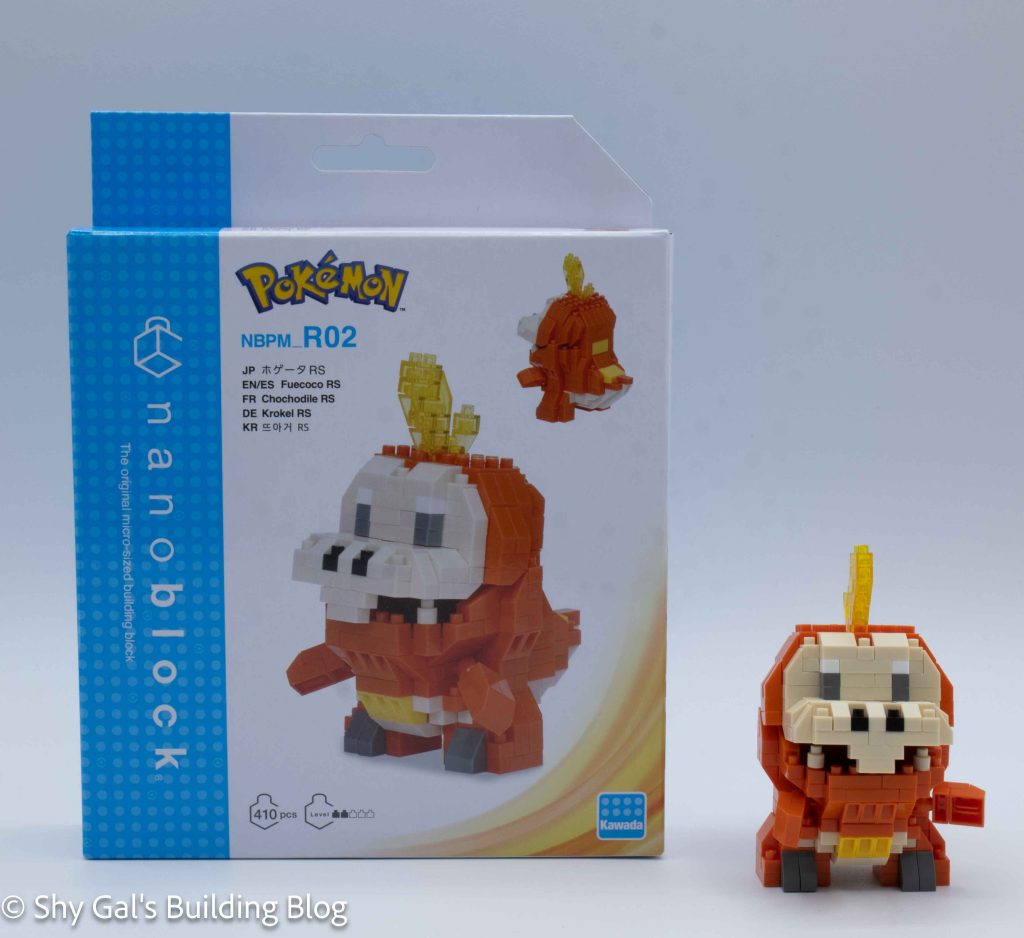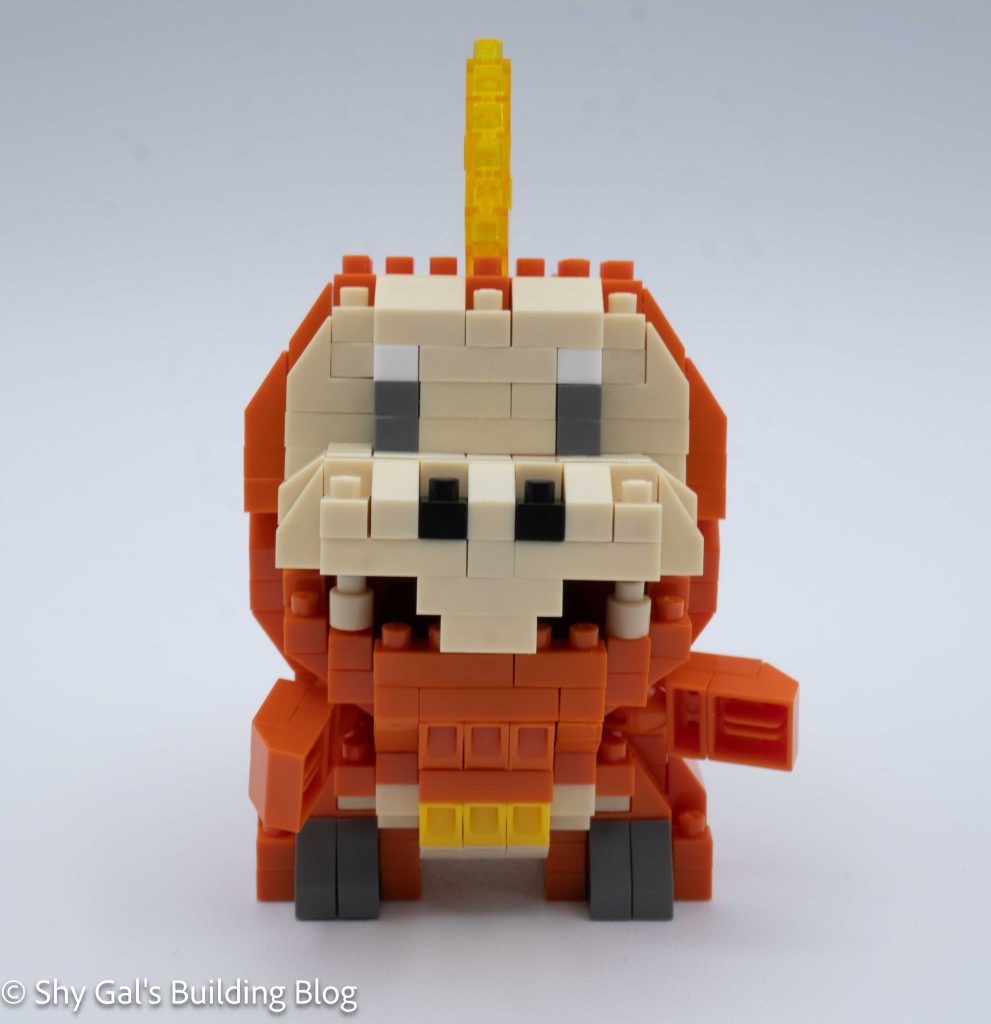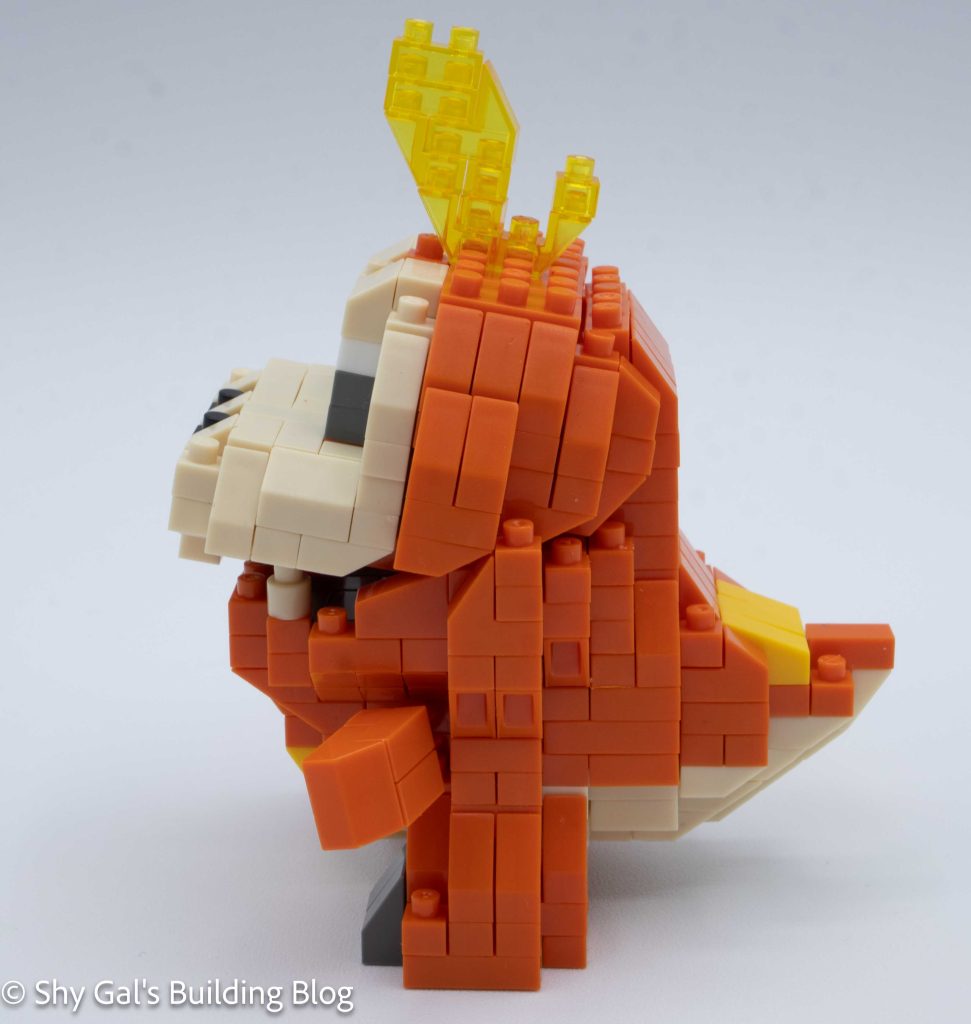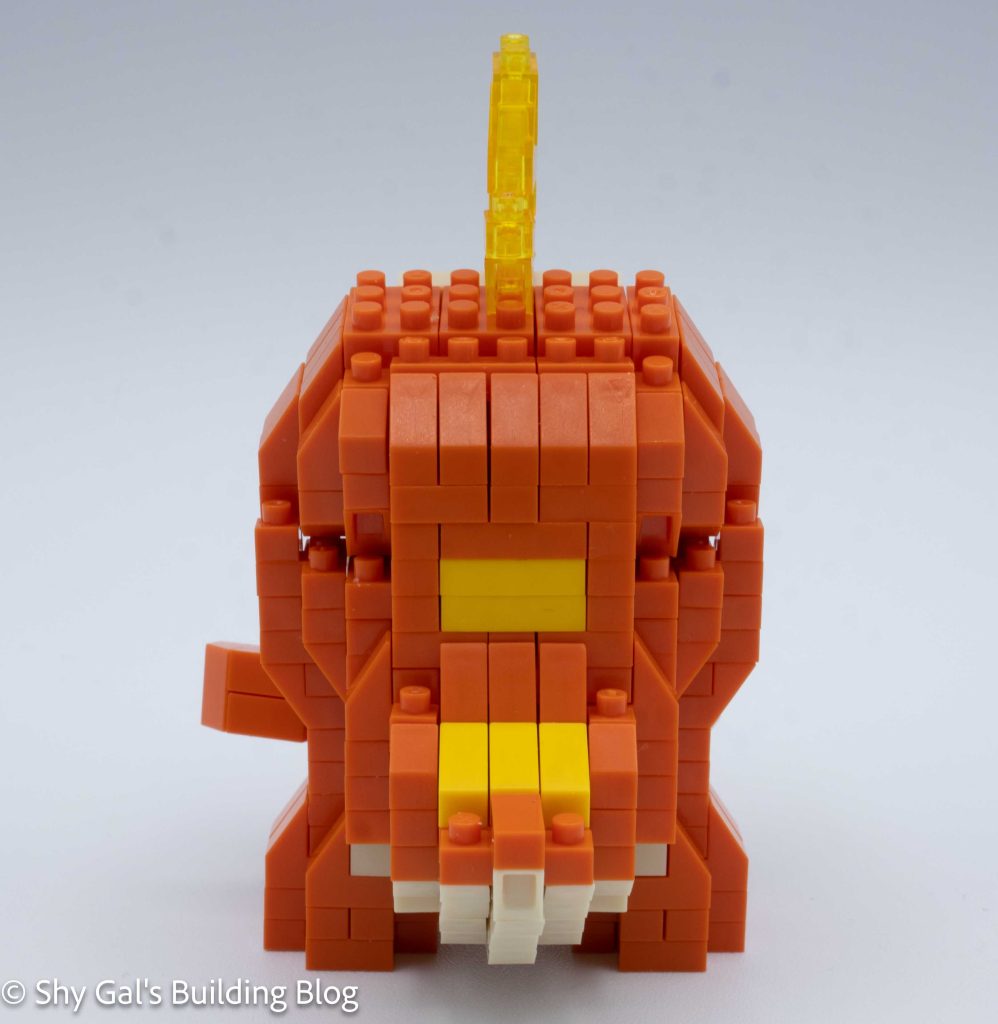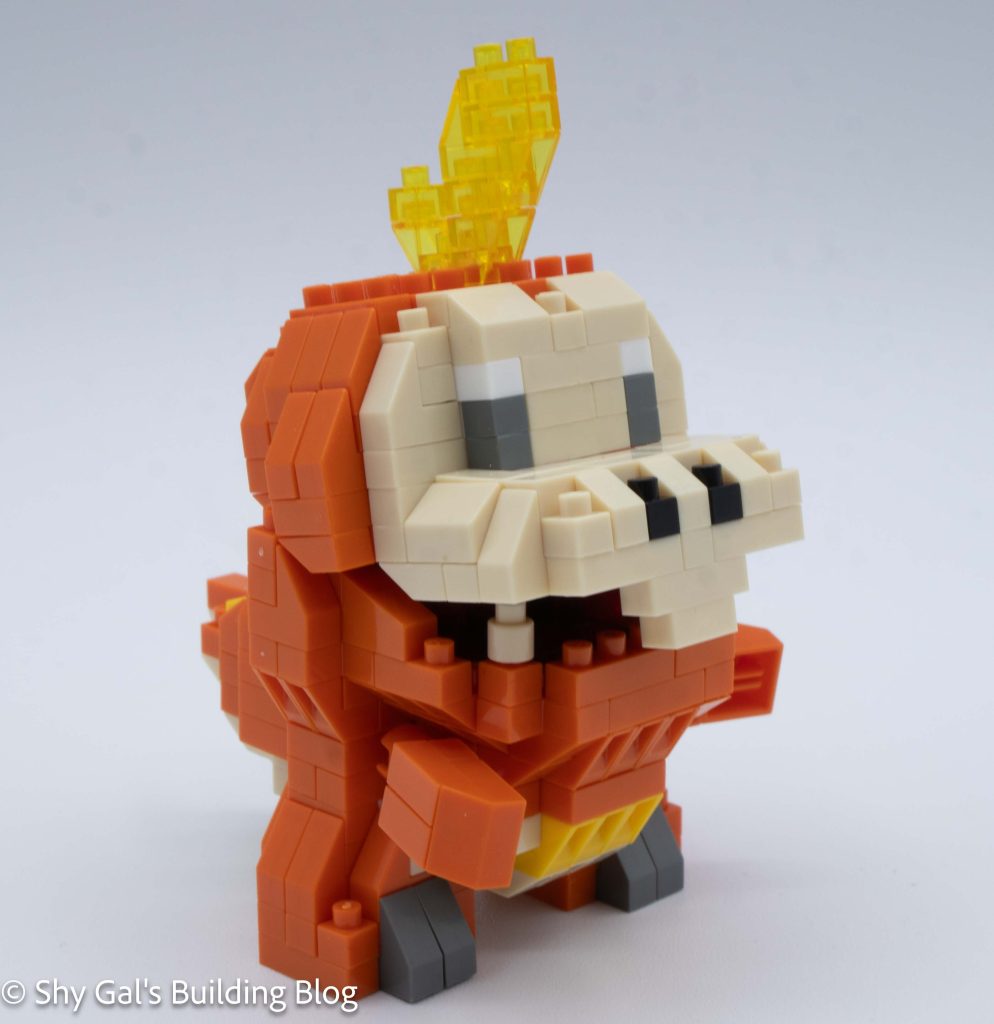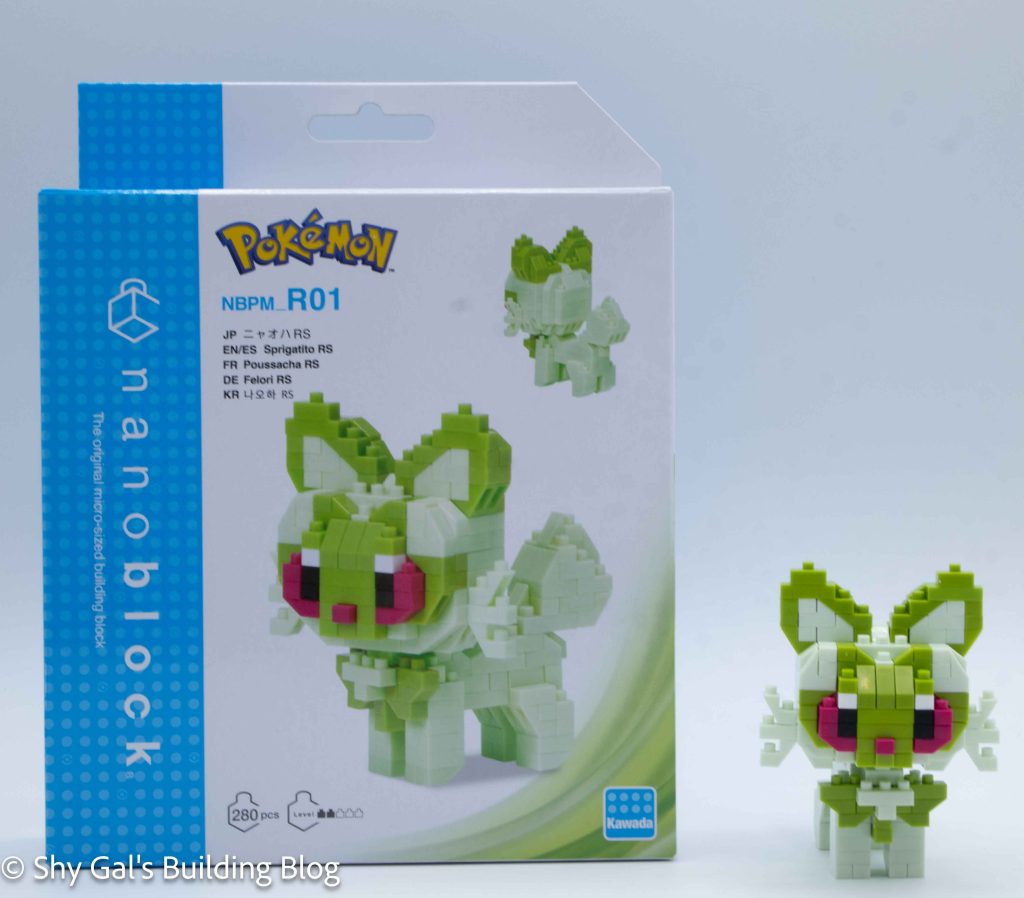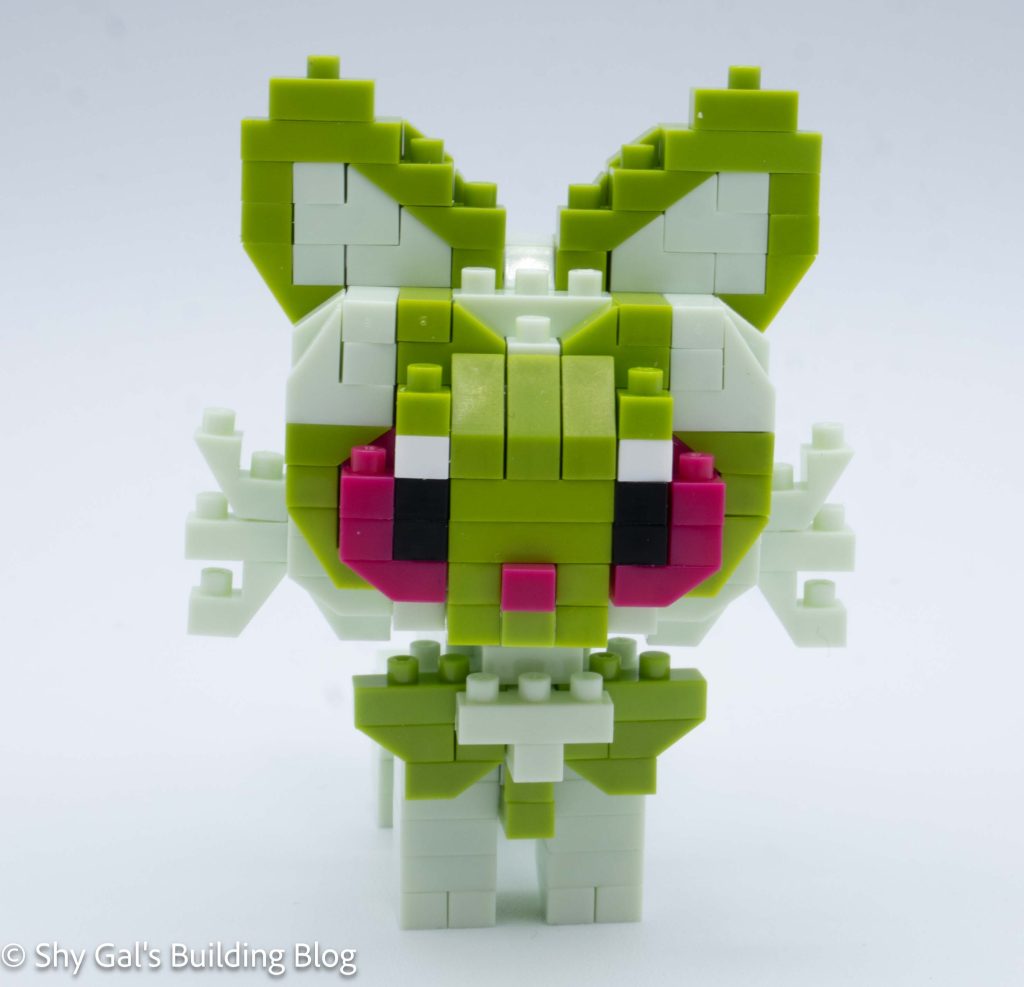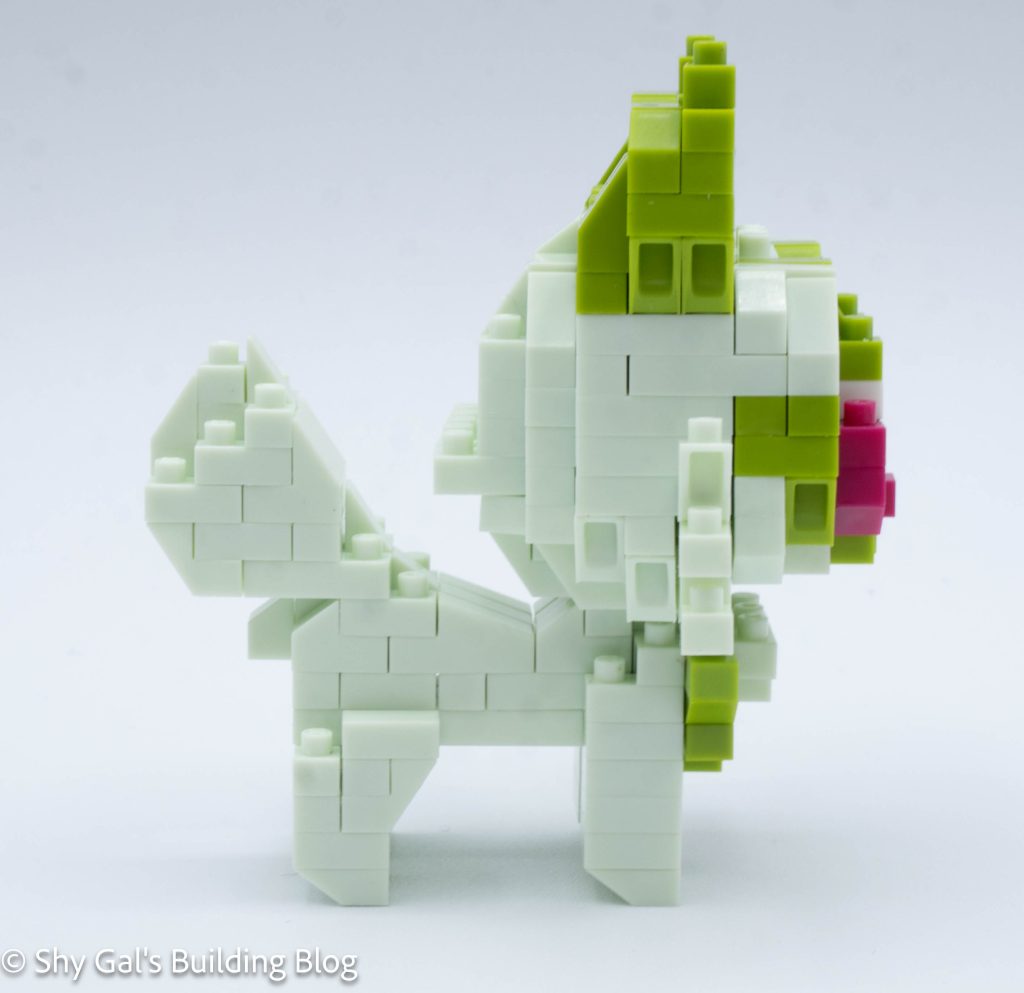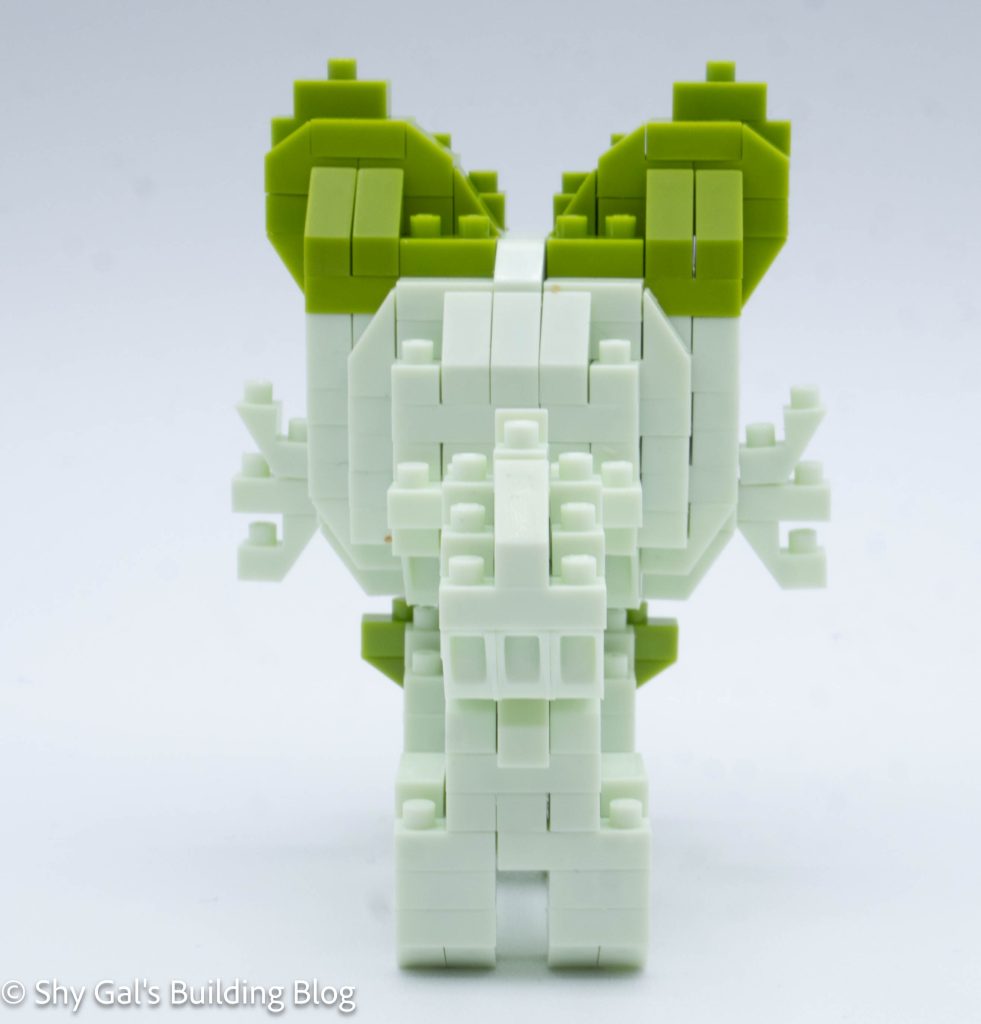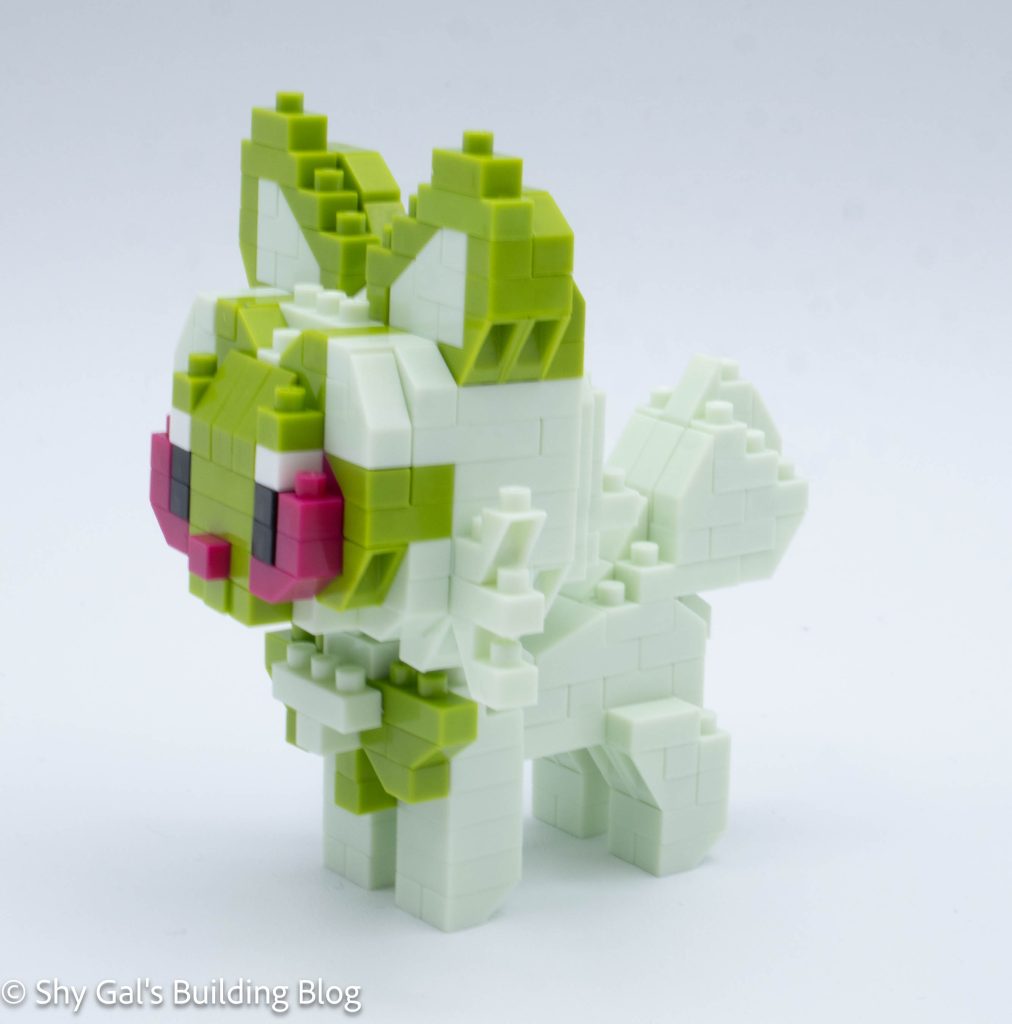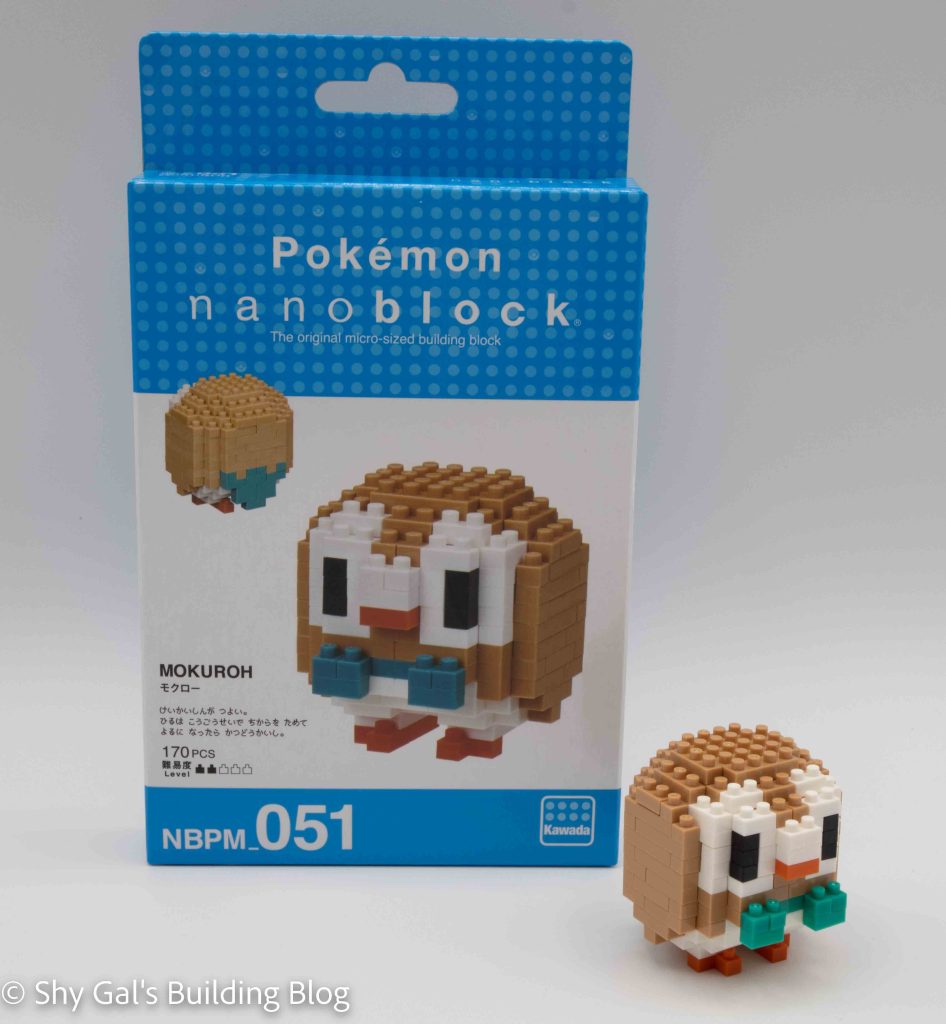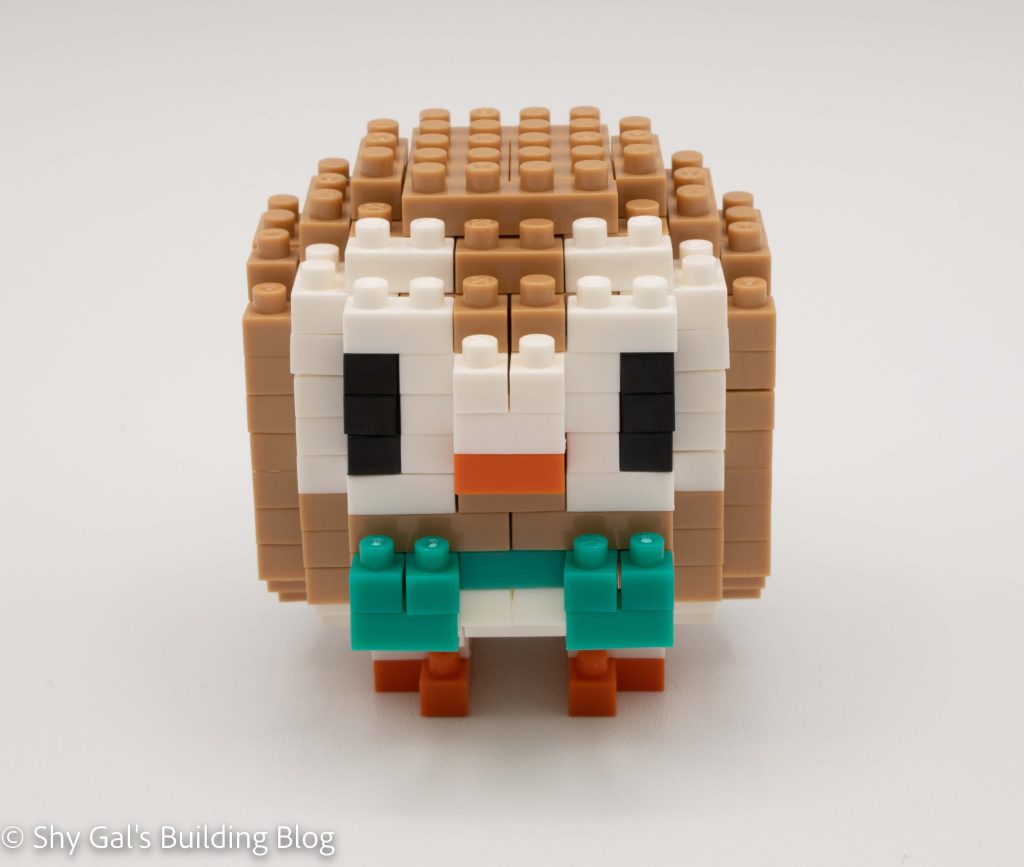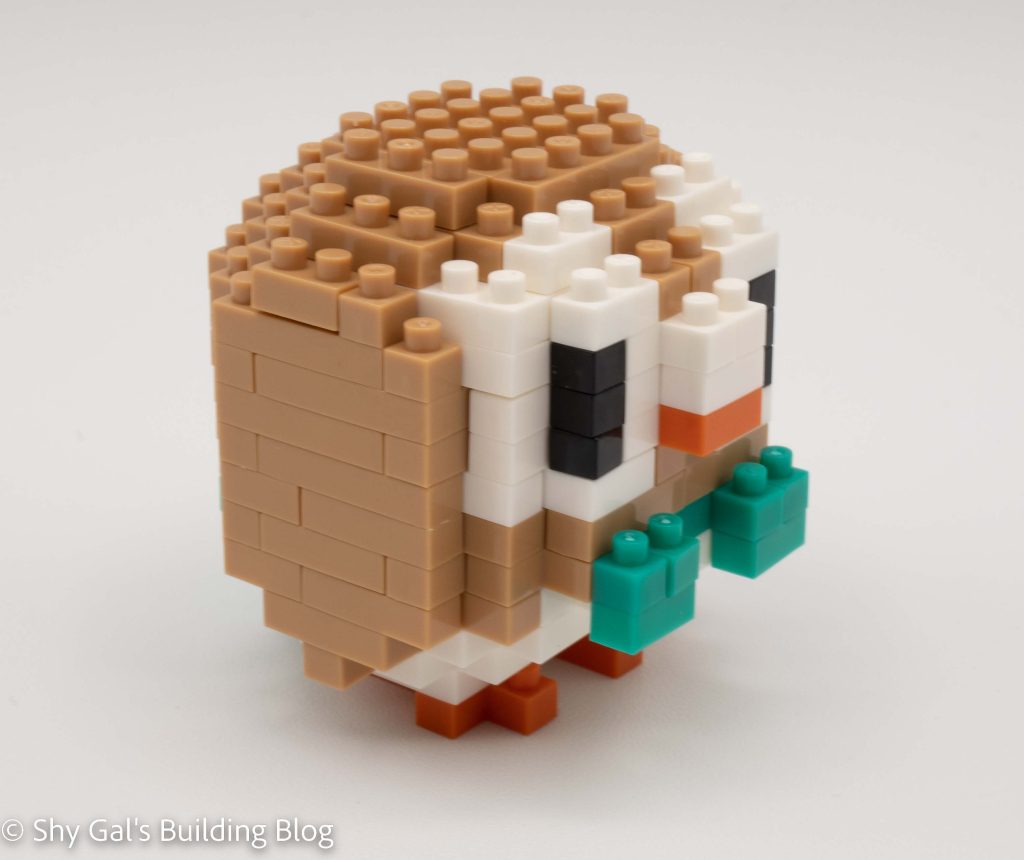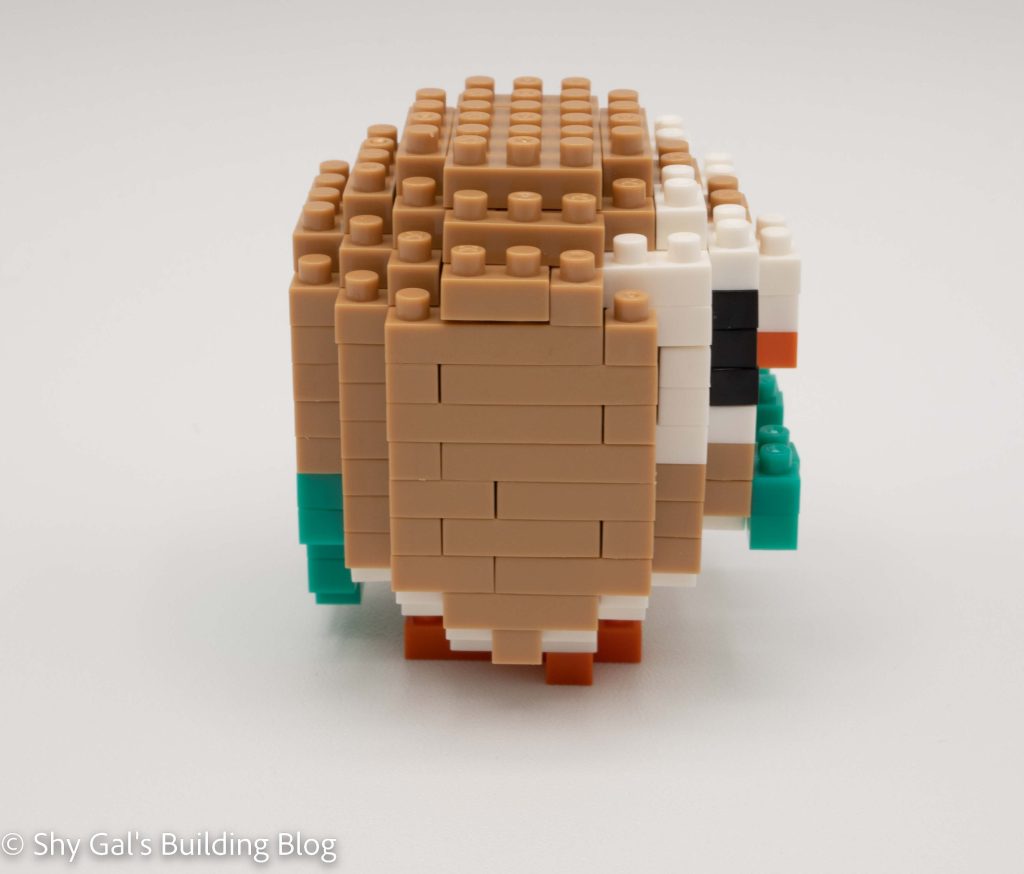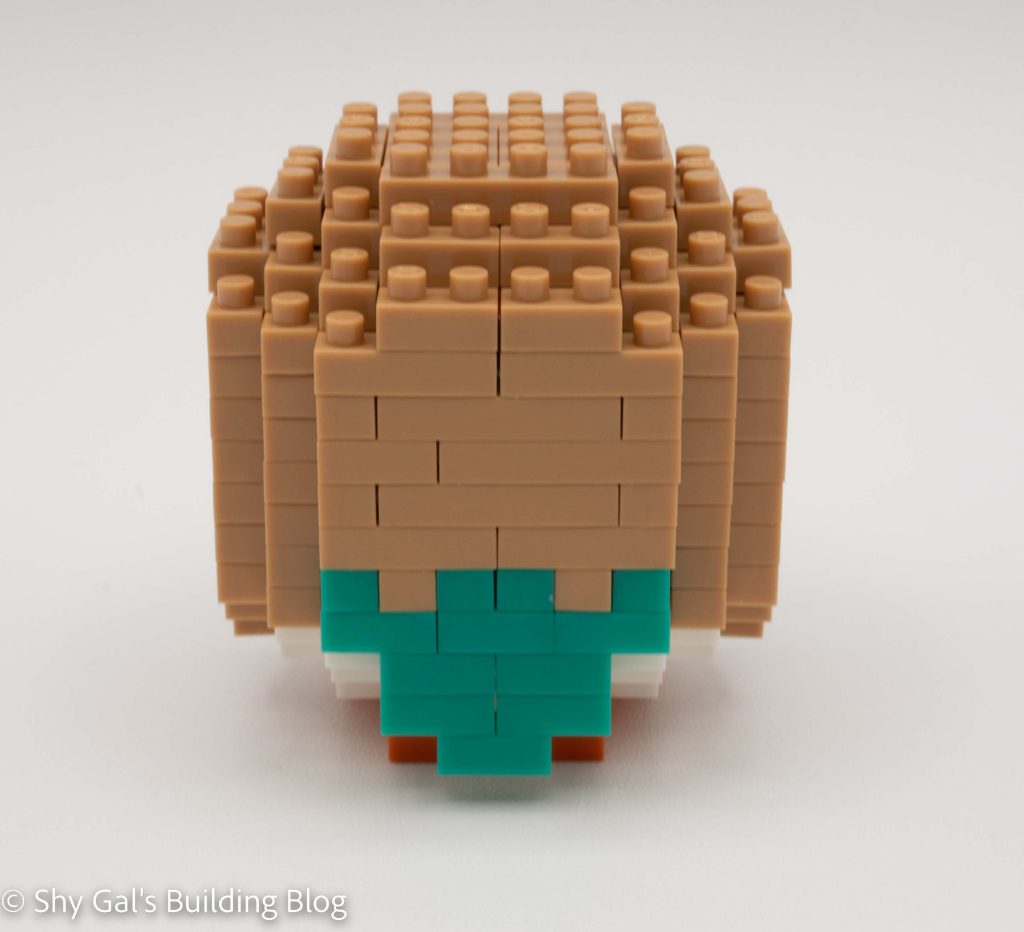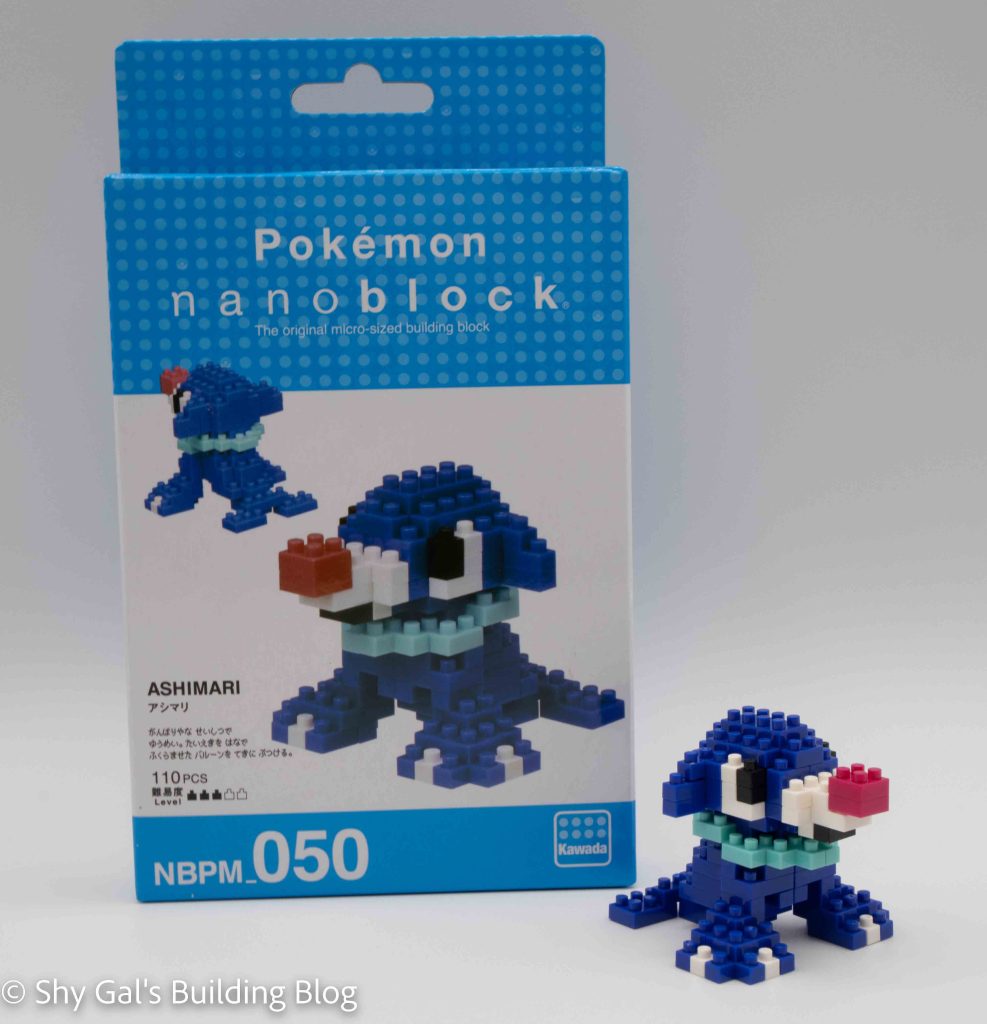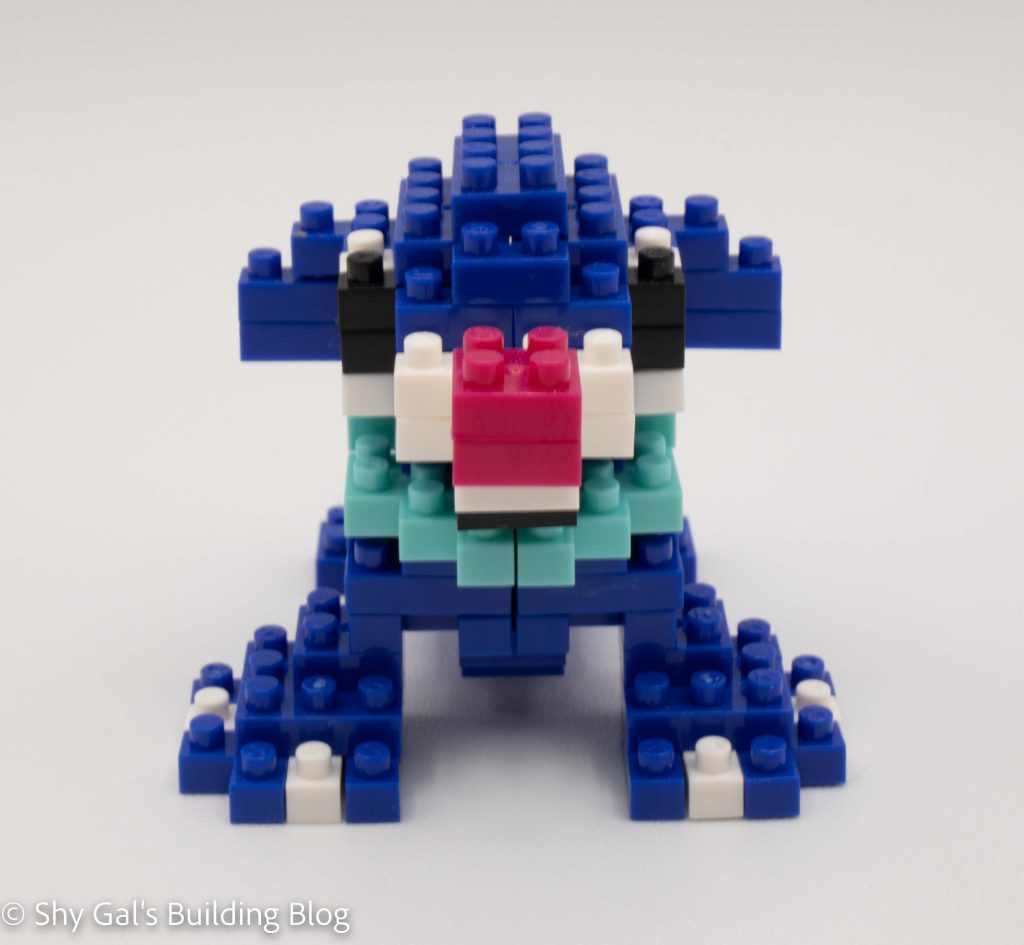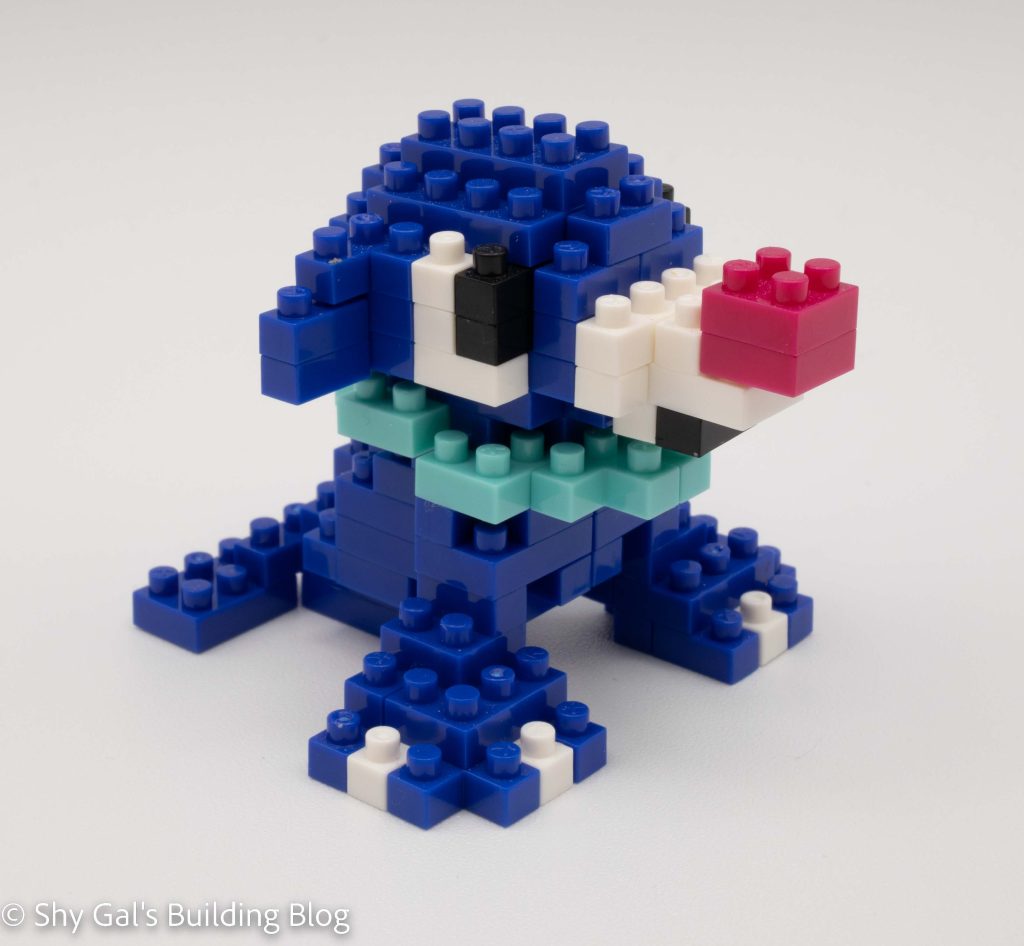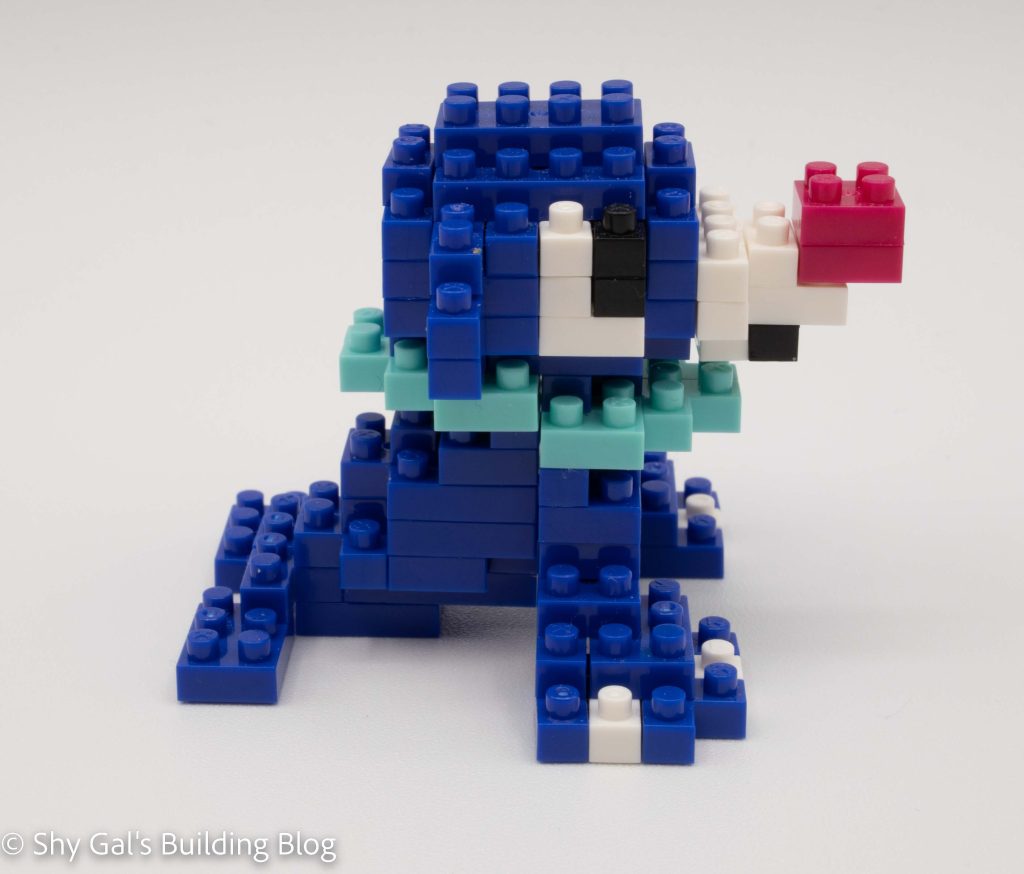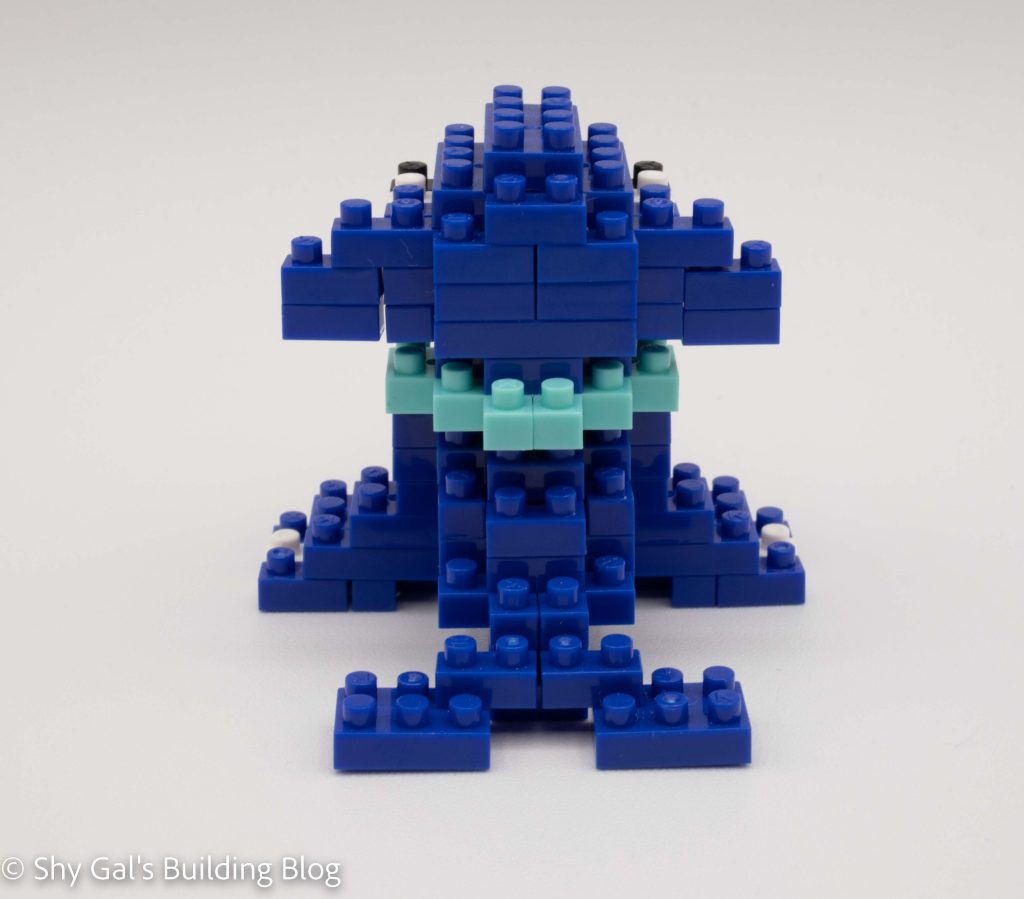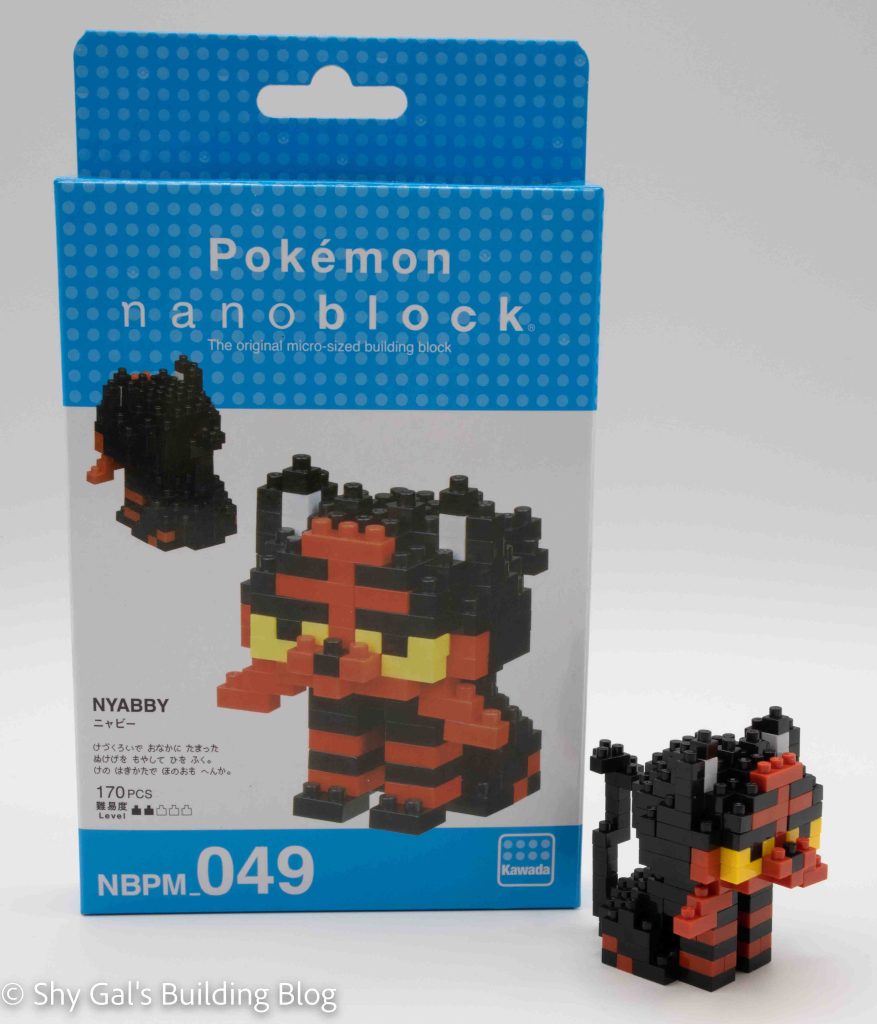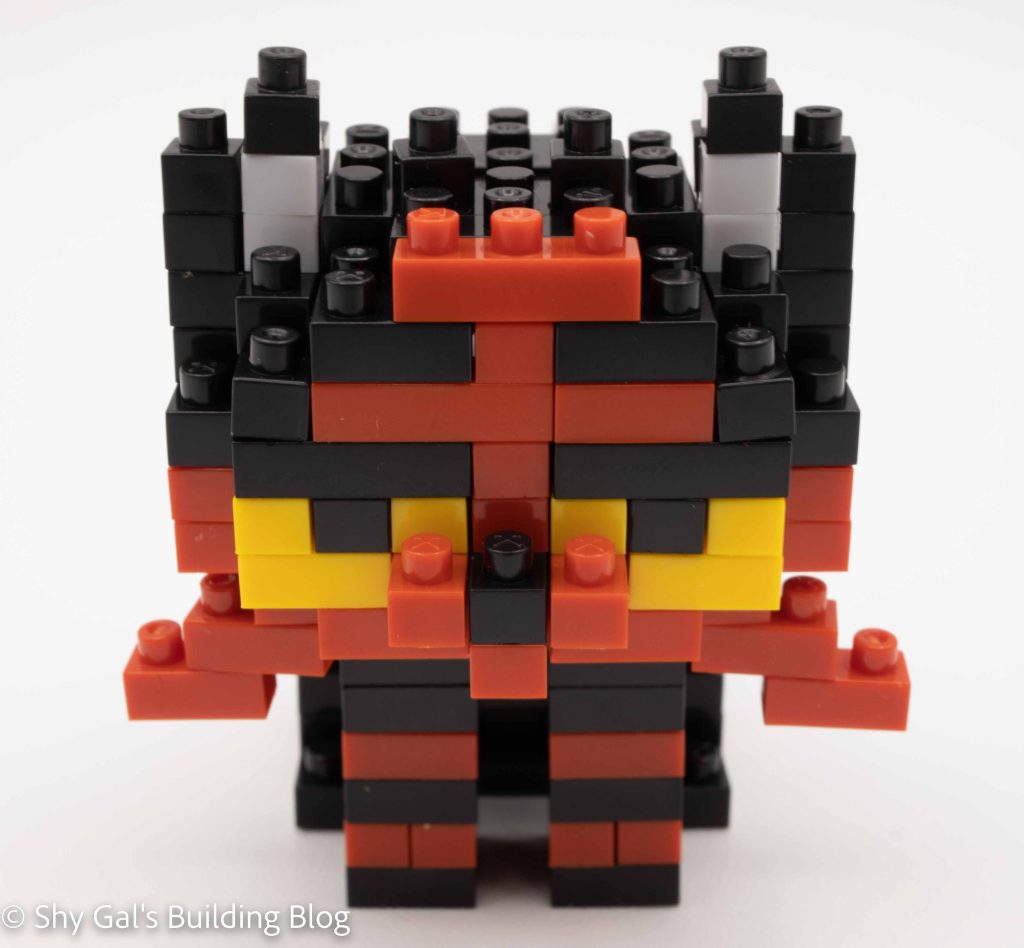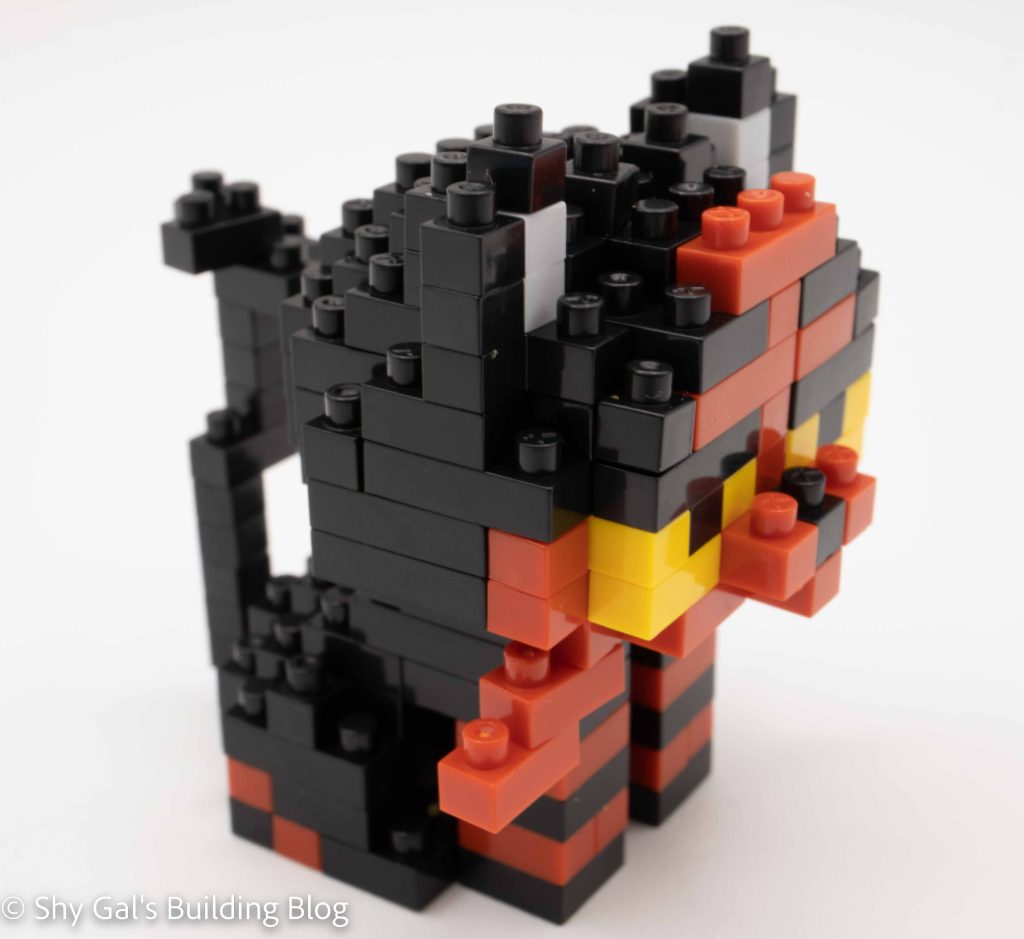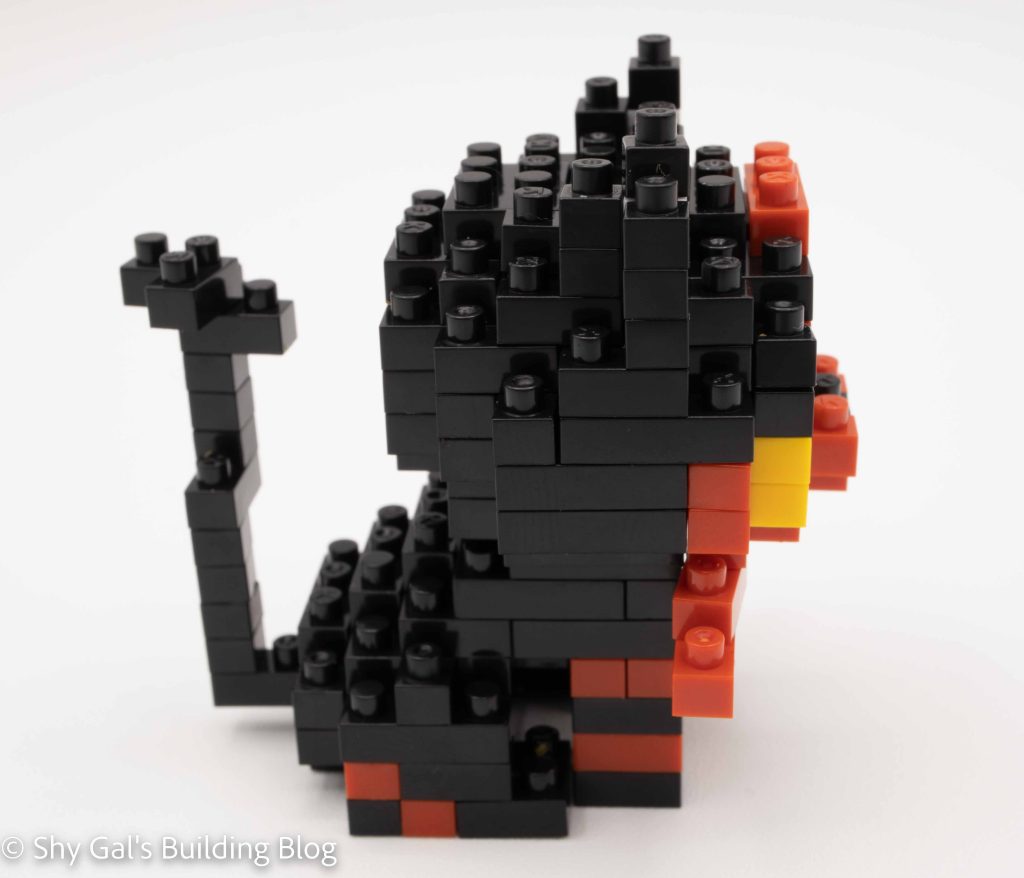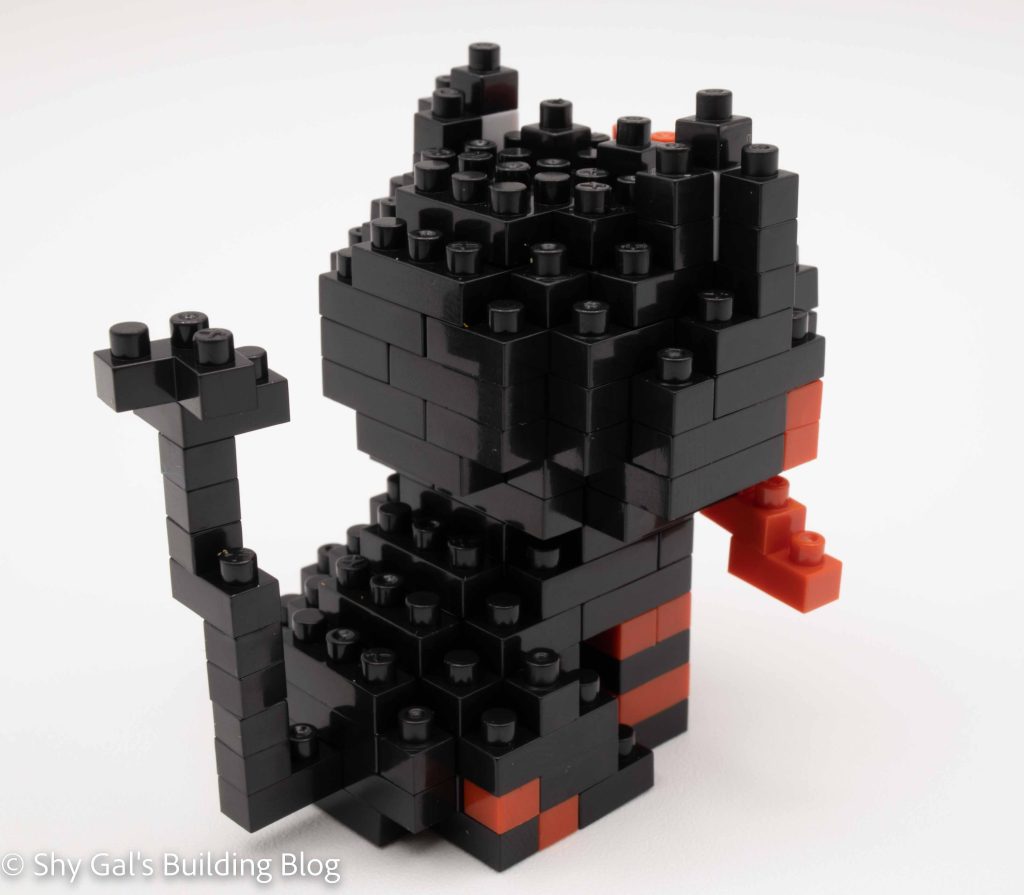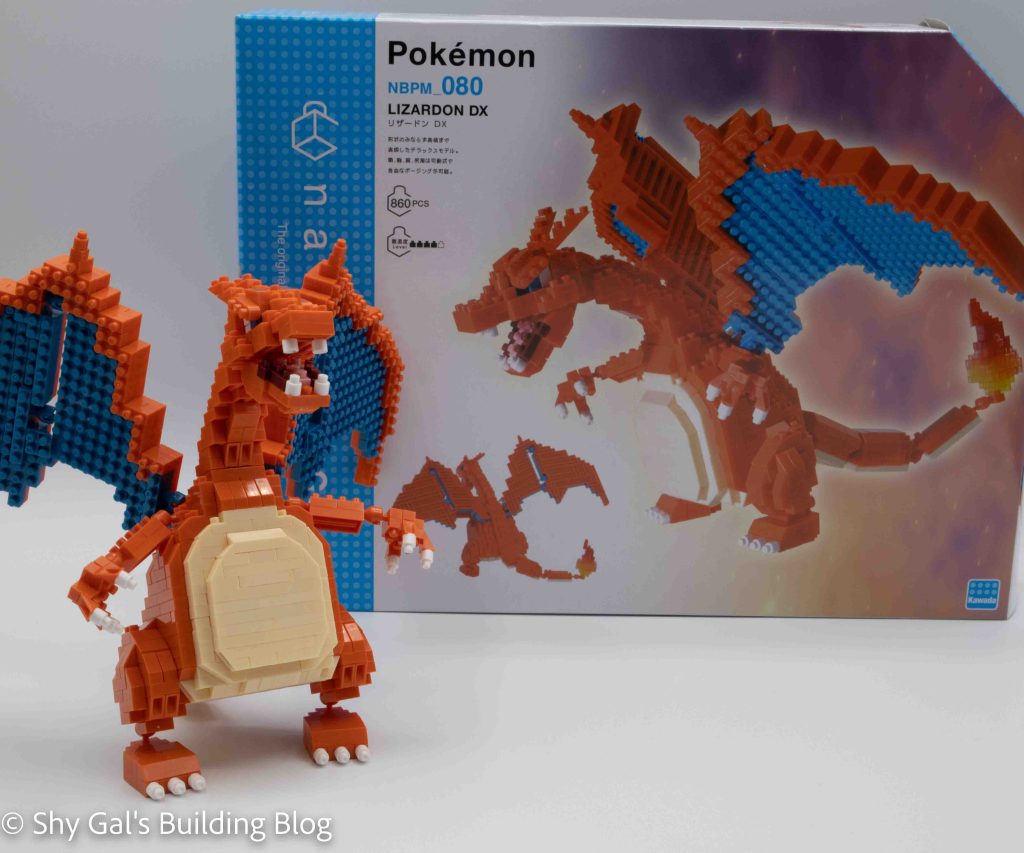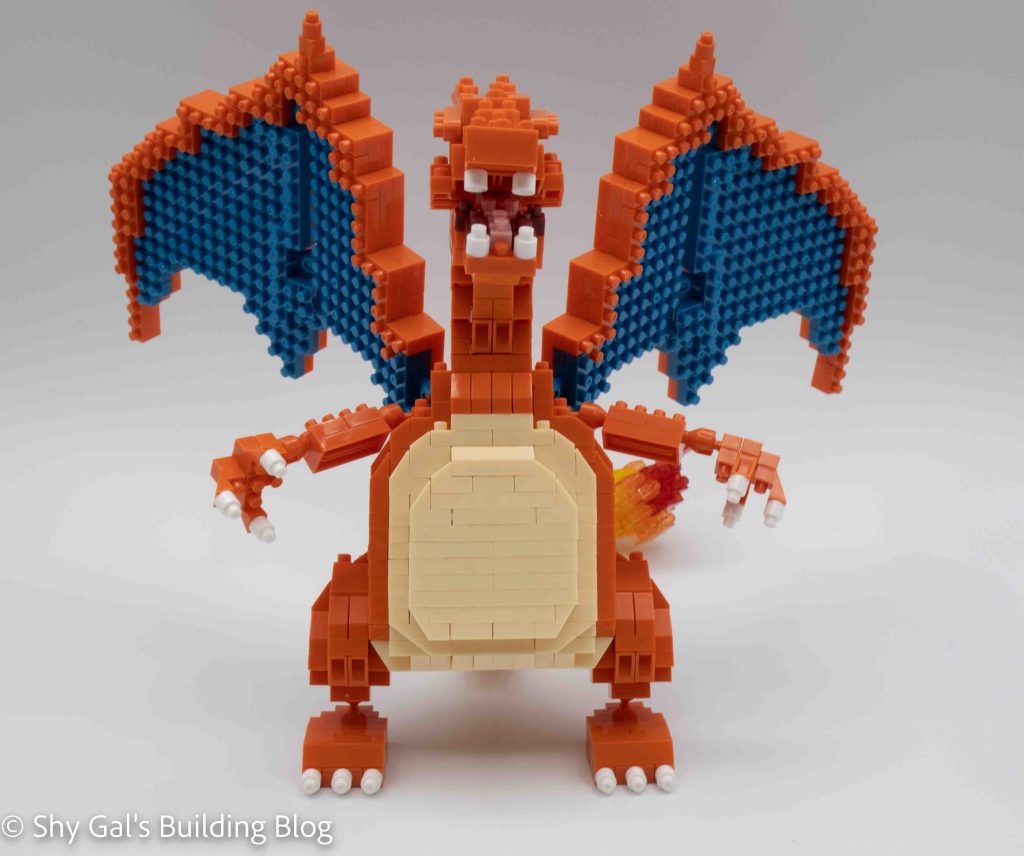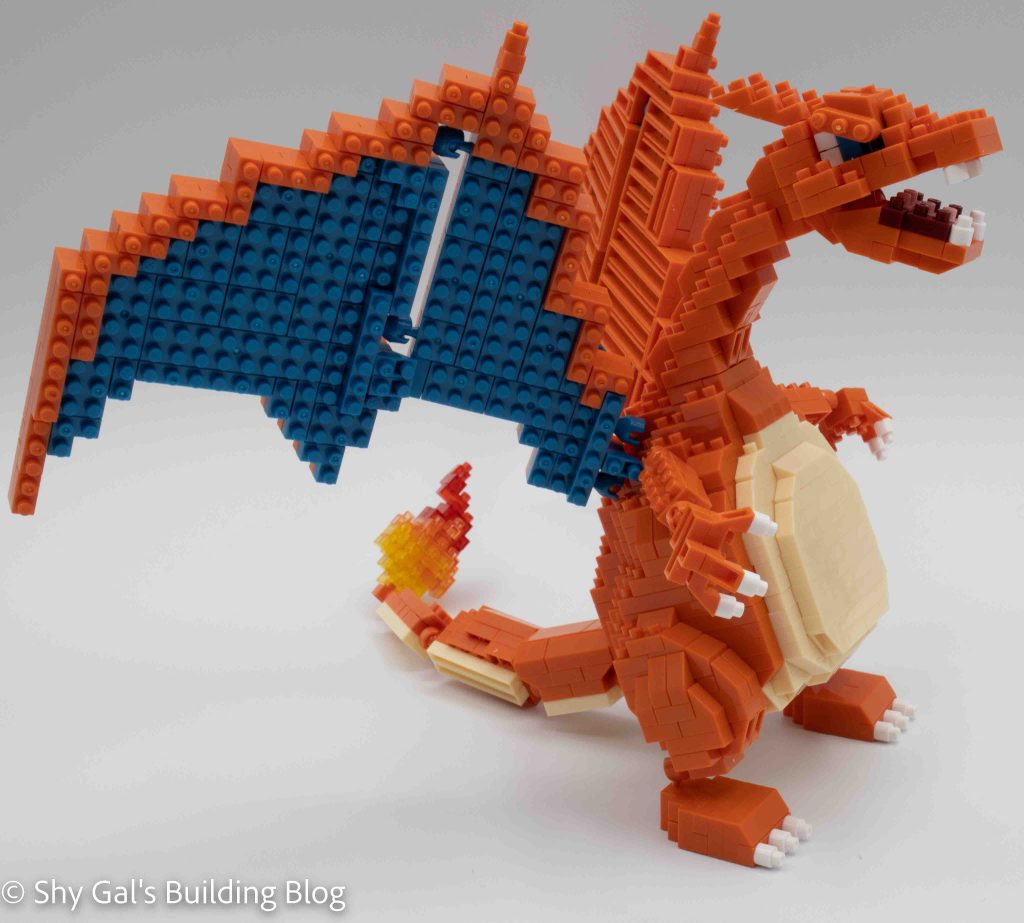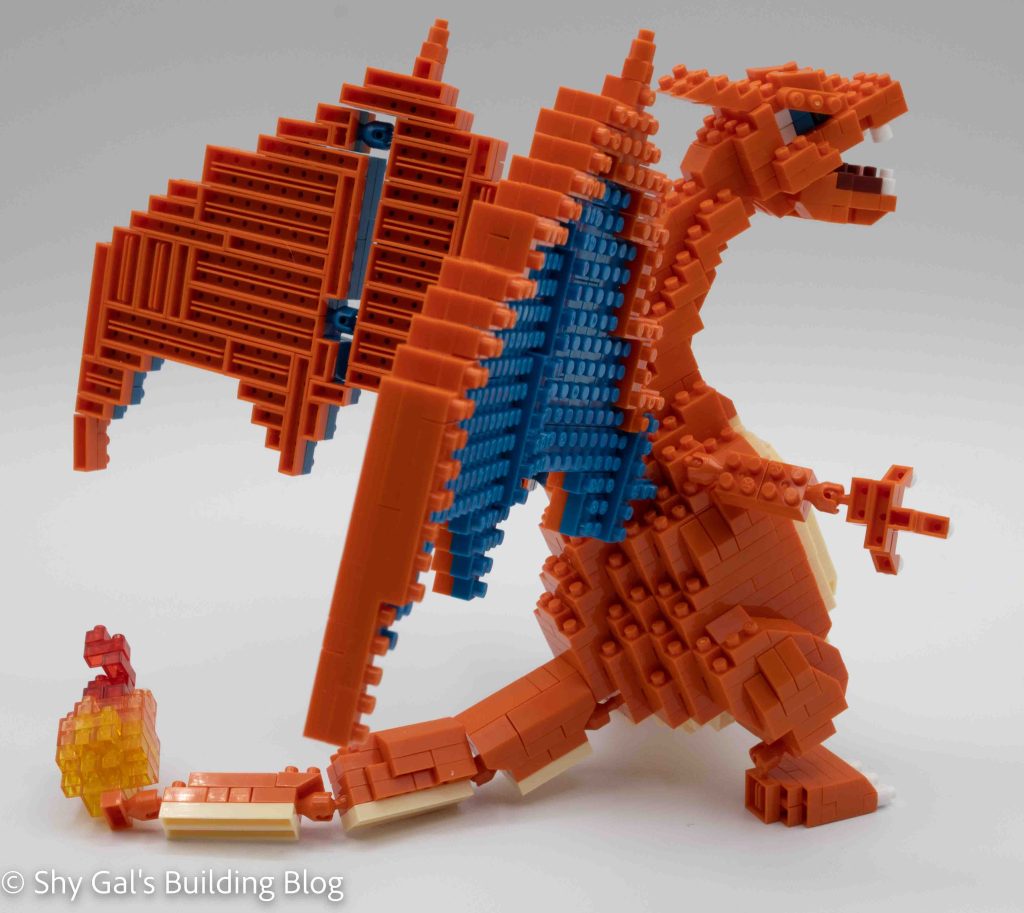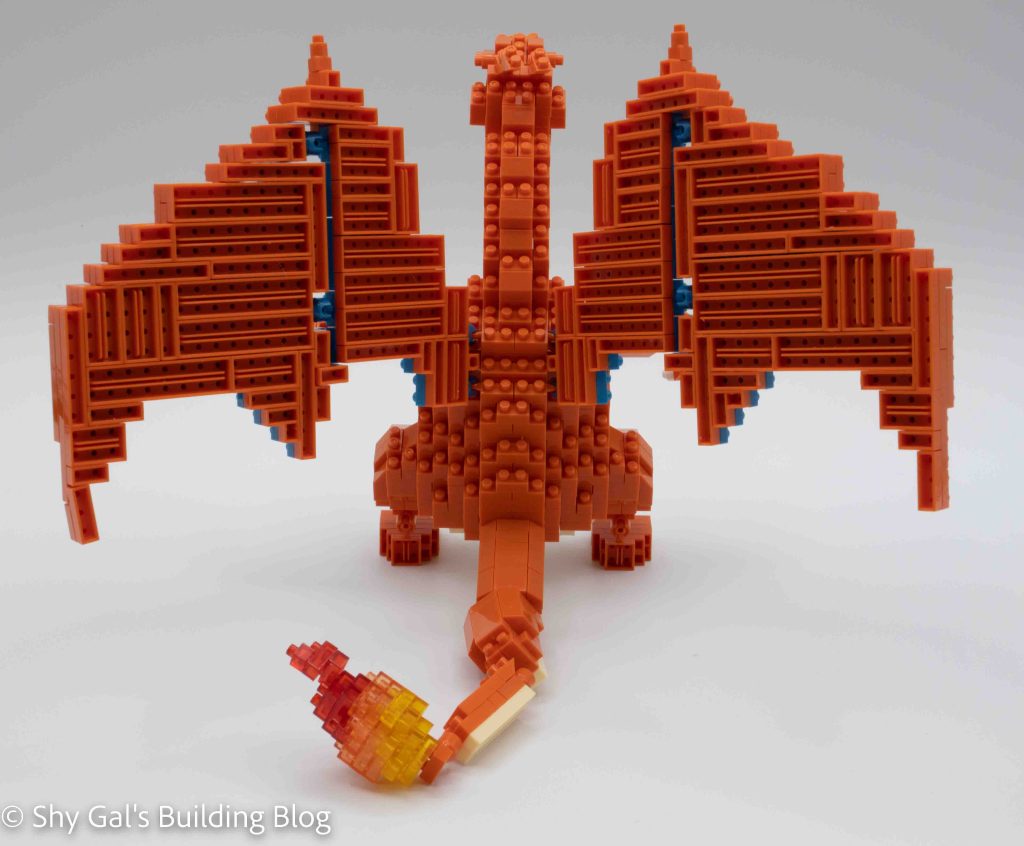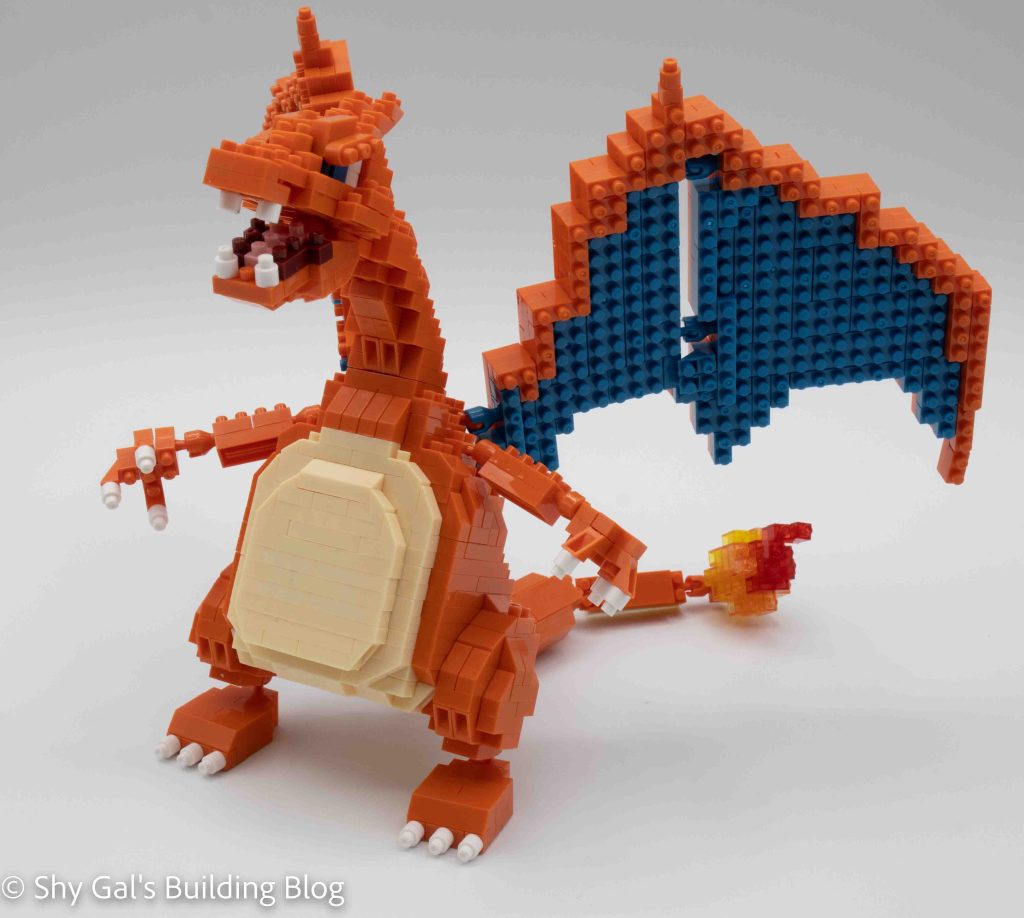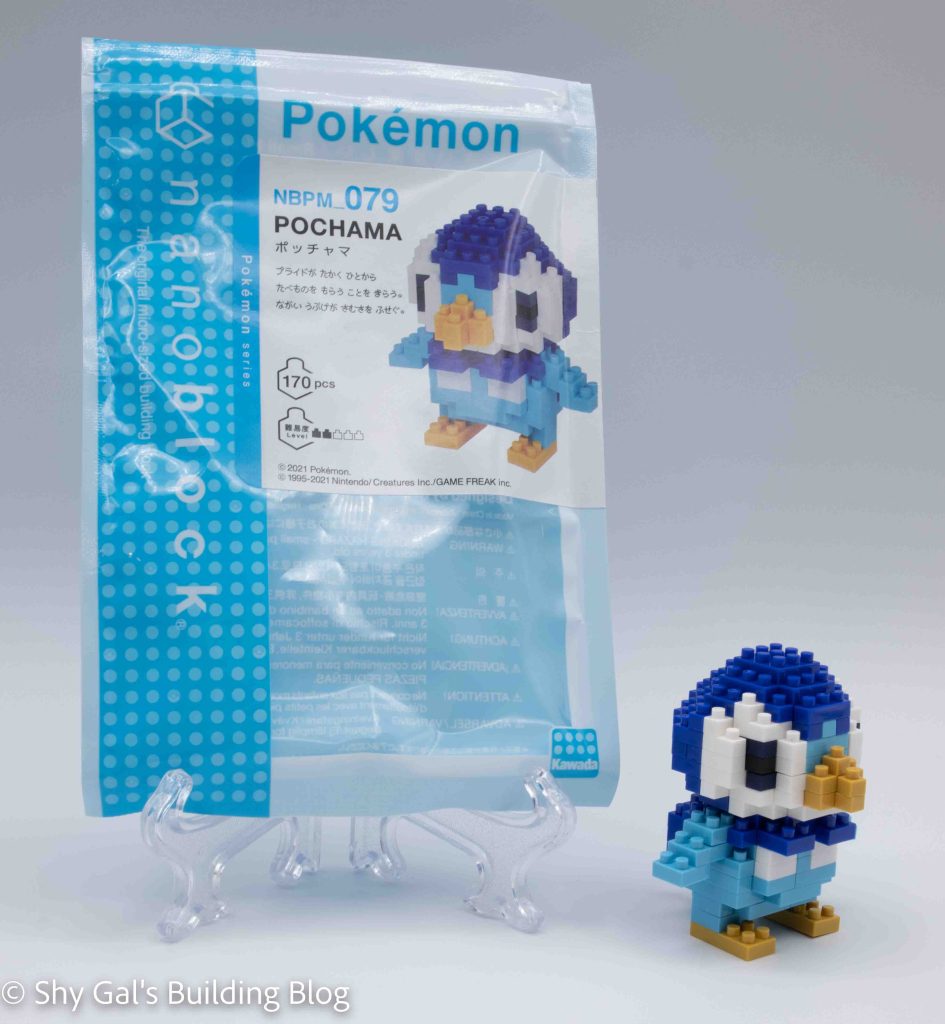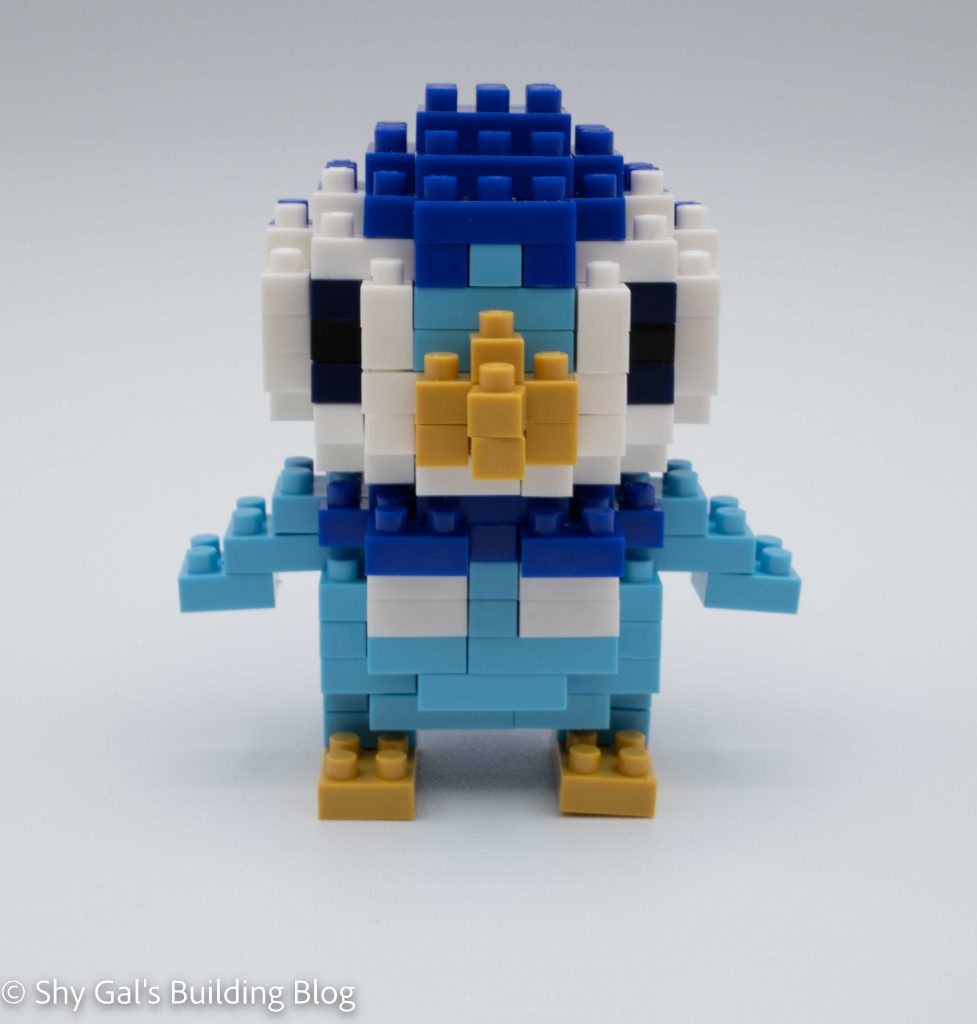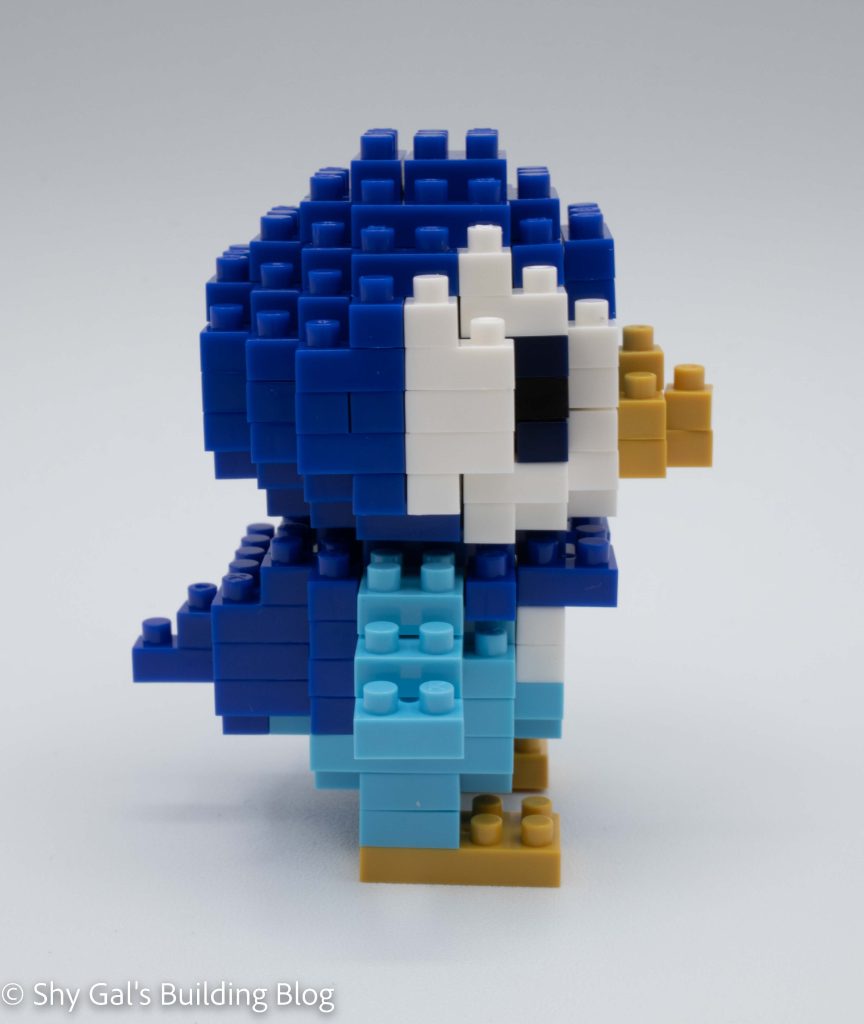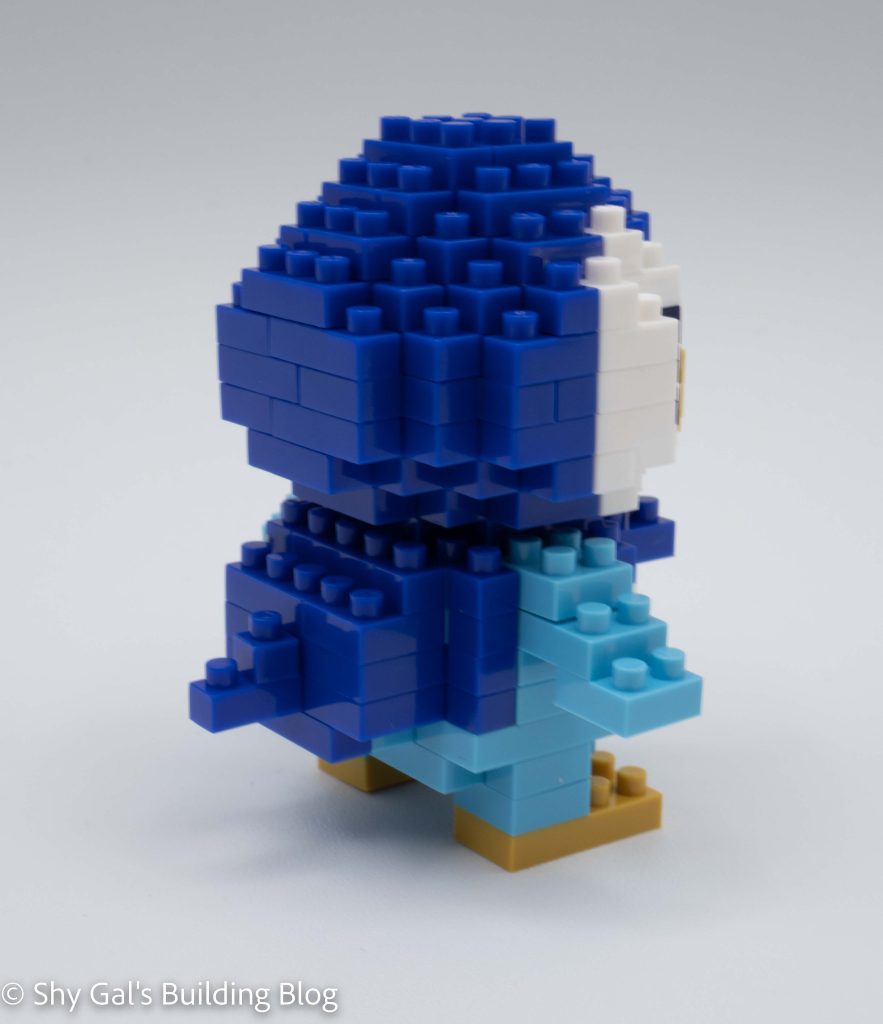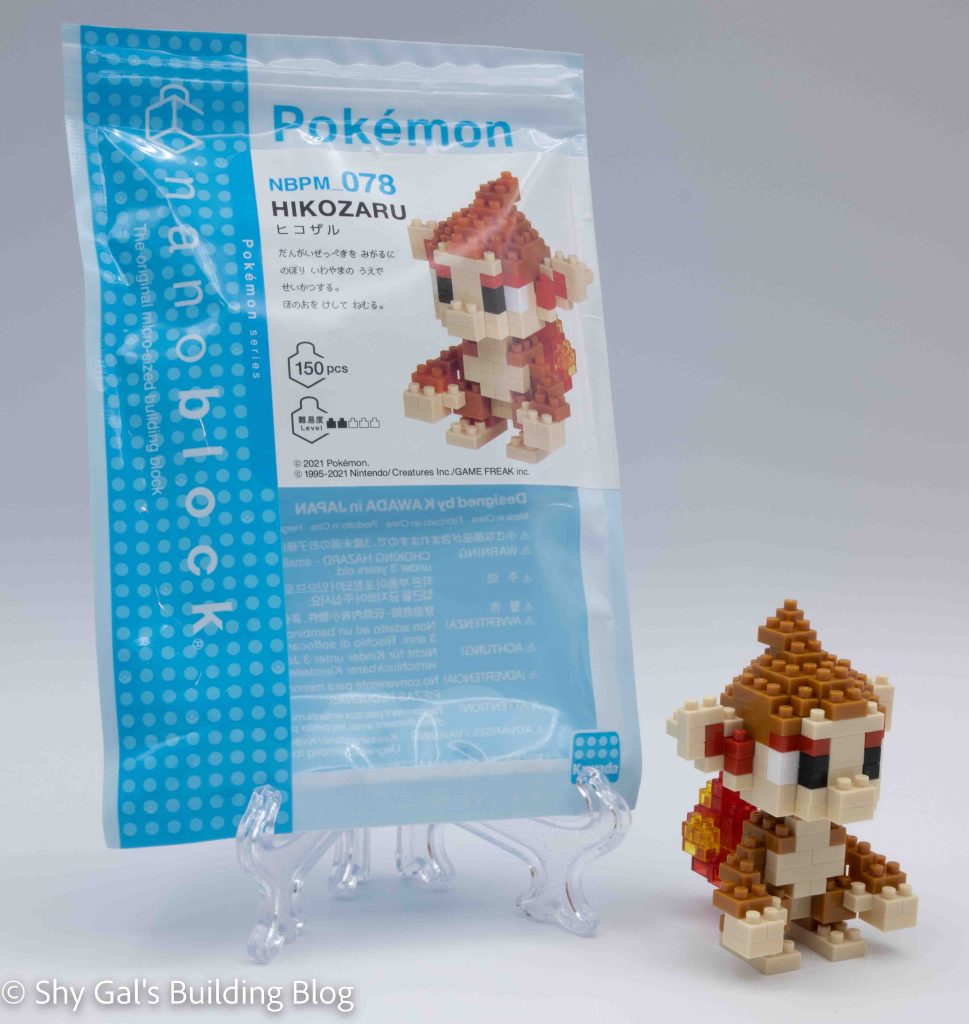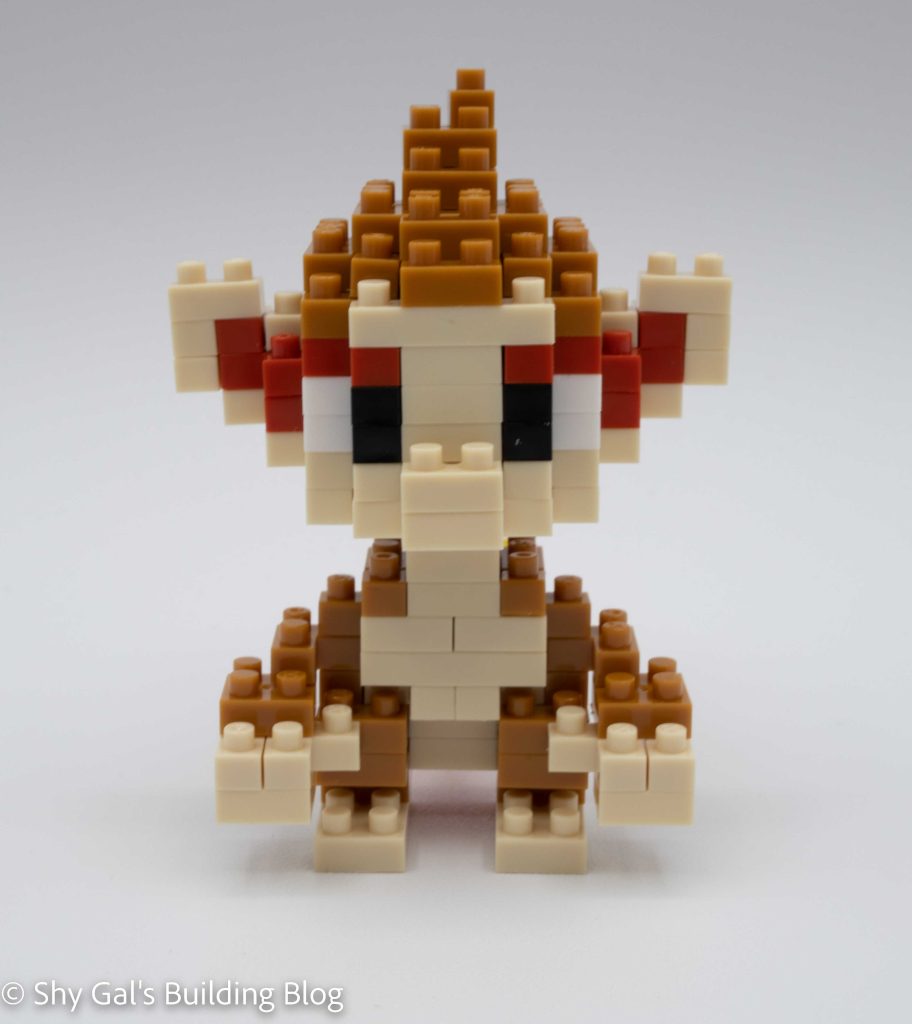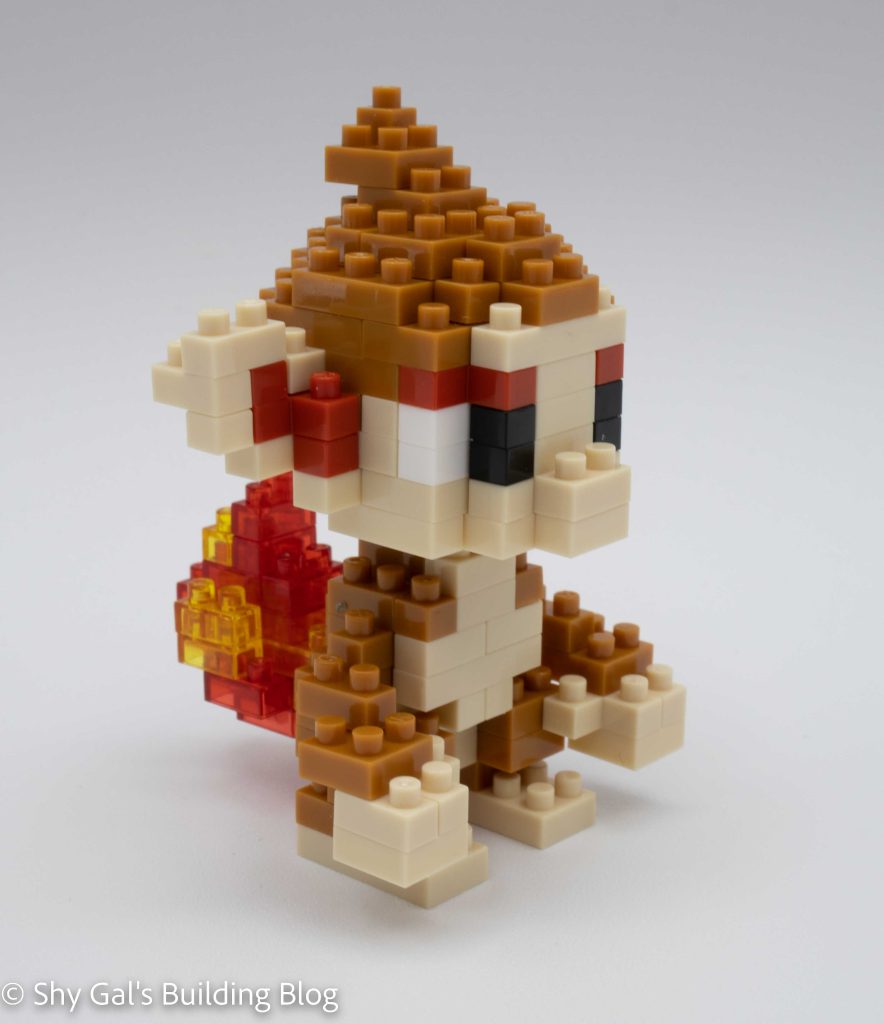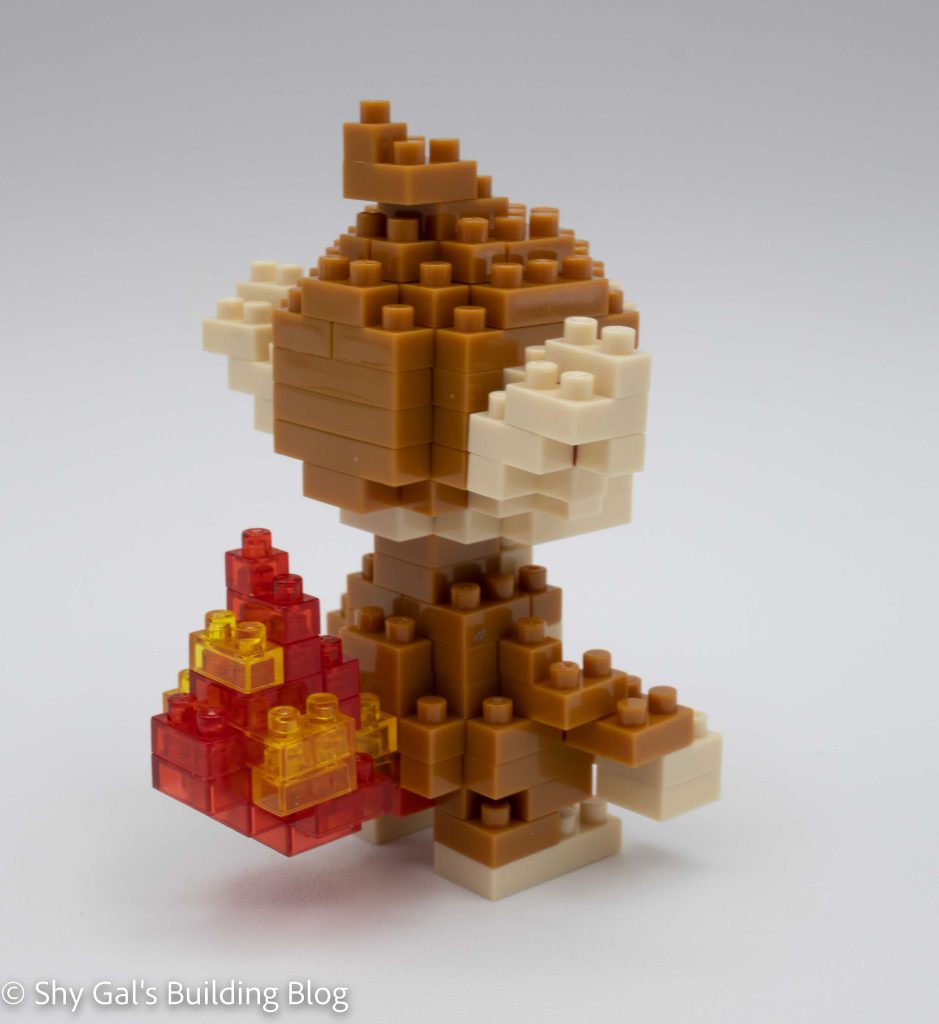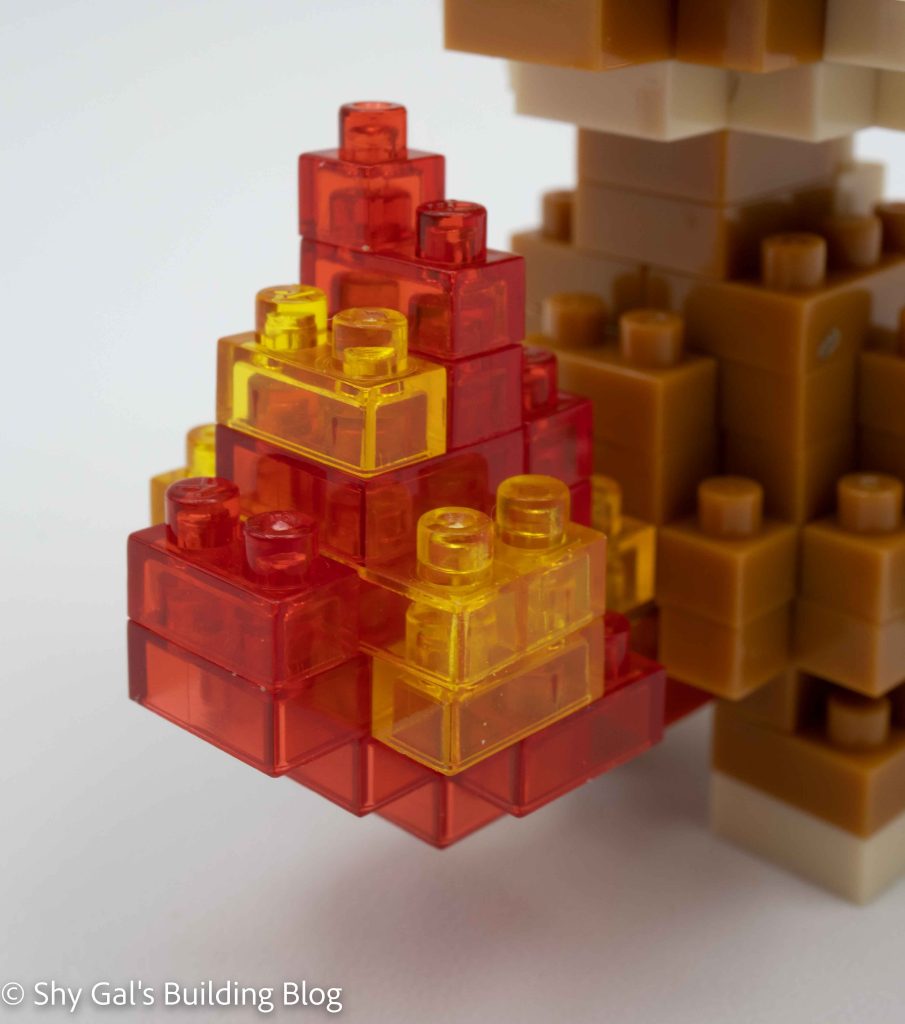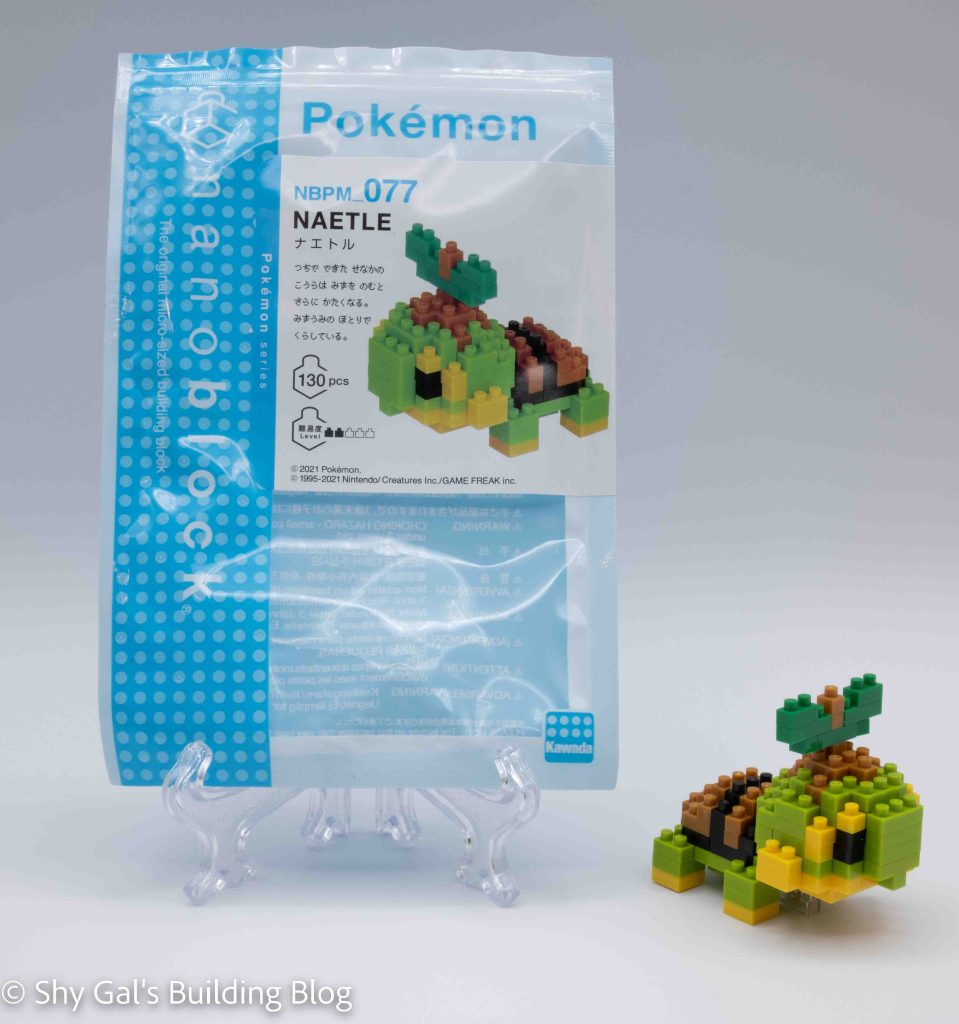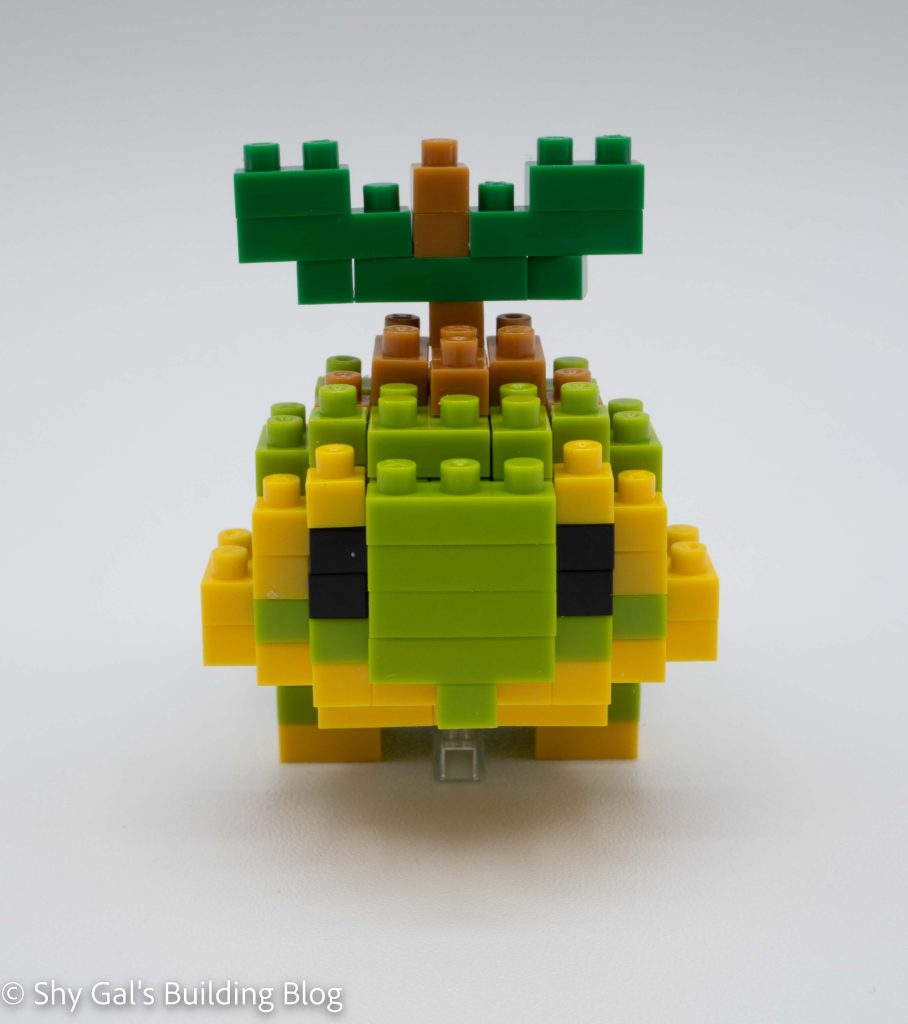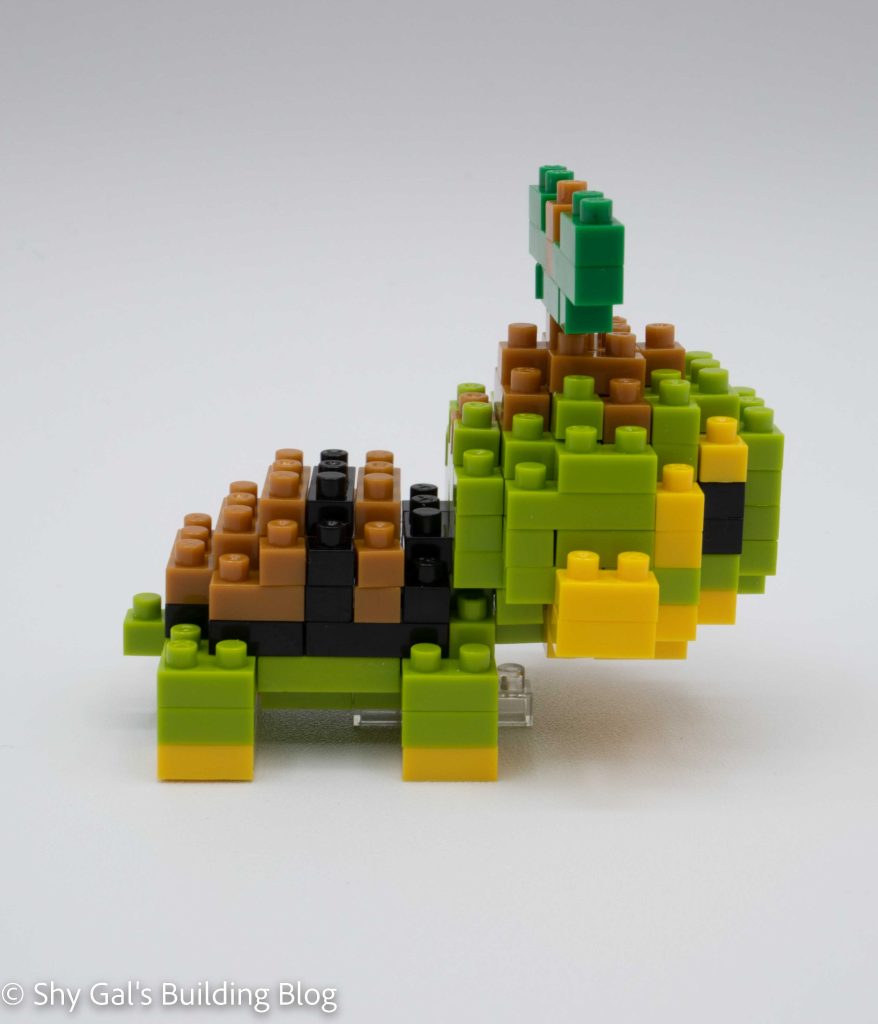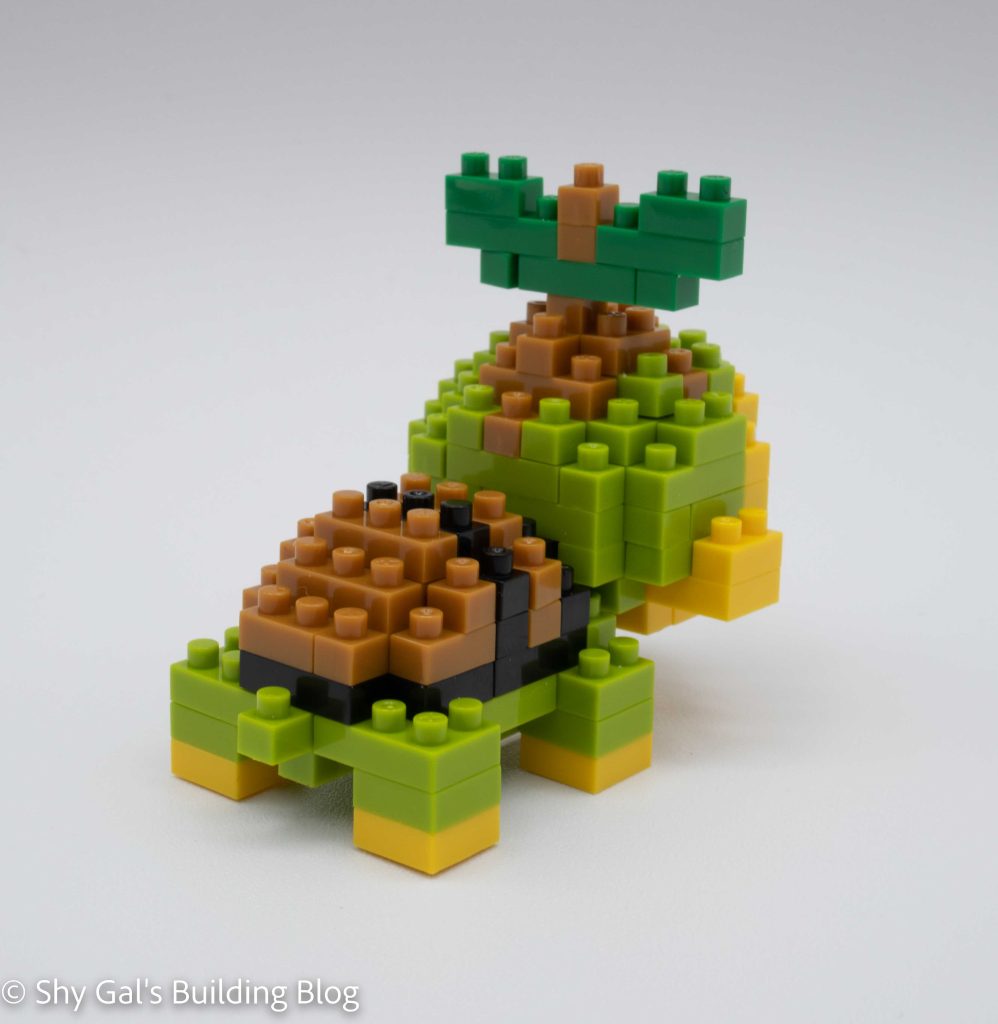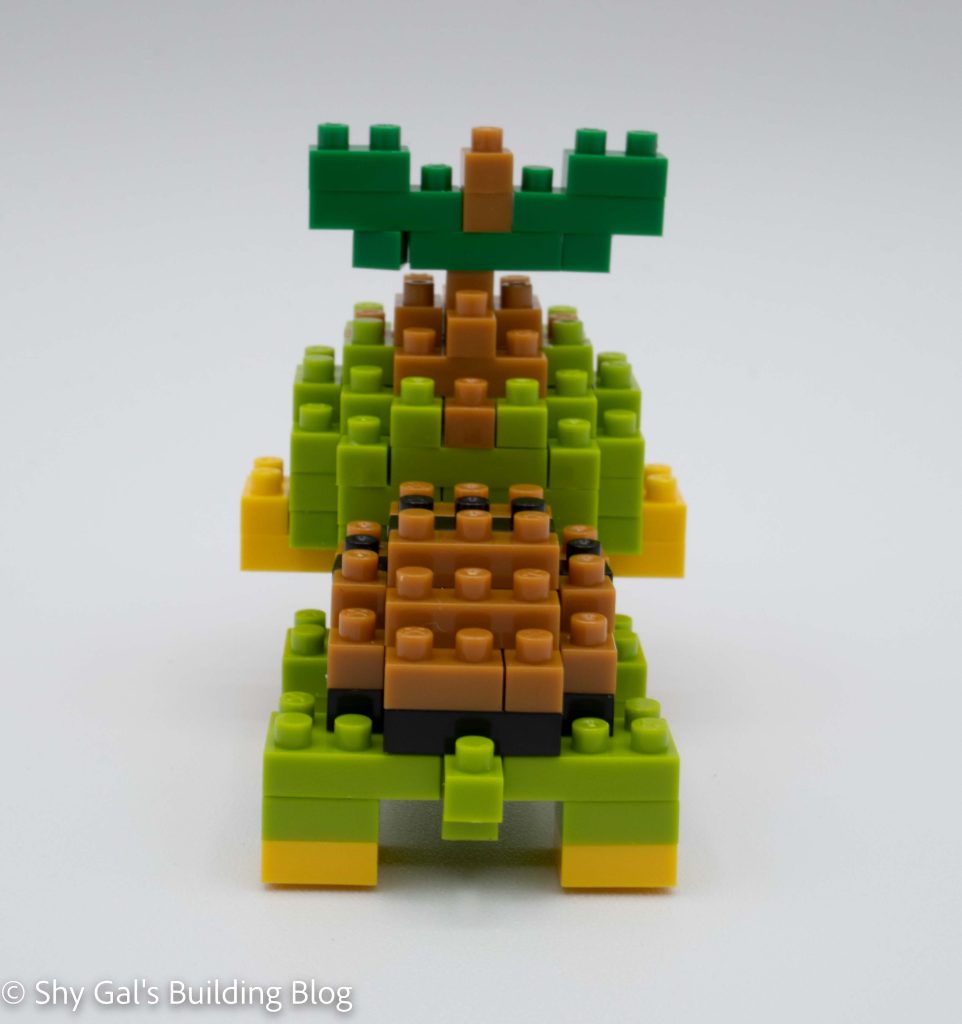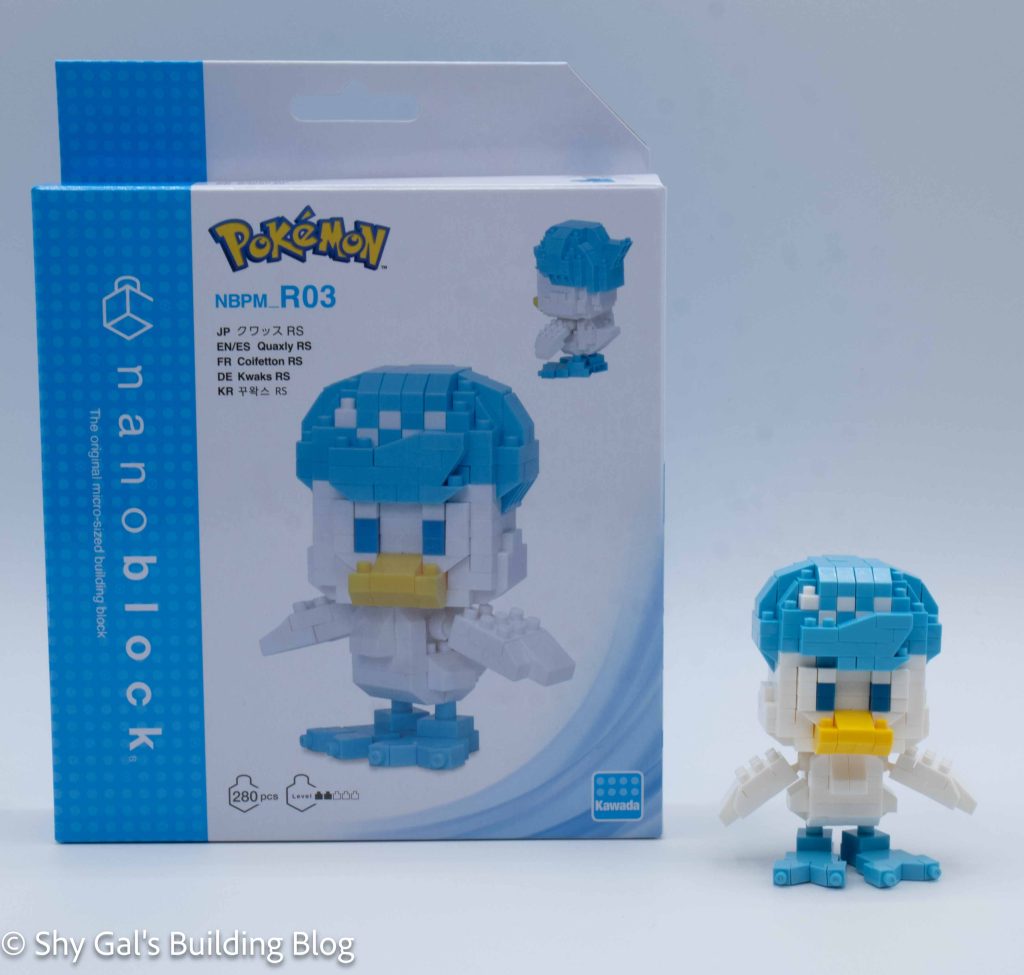
This post is a review of the nanoblock Quaxly RS build. Quaxly RS is part of the nanoblock Pokemon collection. Wondering what else is part of the Pokemon collection? Click here for a list.
Number: NBPM_R03
Number of Pieces: 280
Difficulty Rating: 2/5
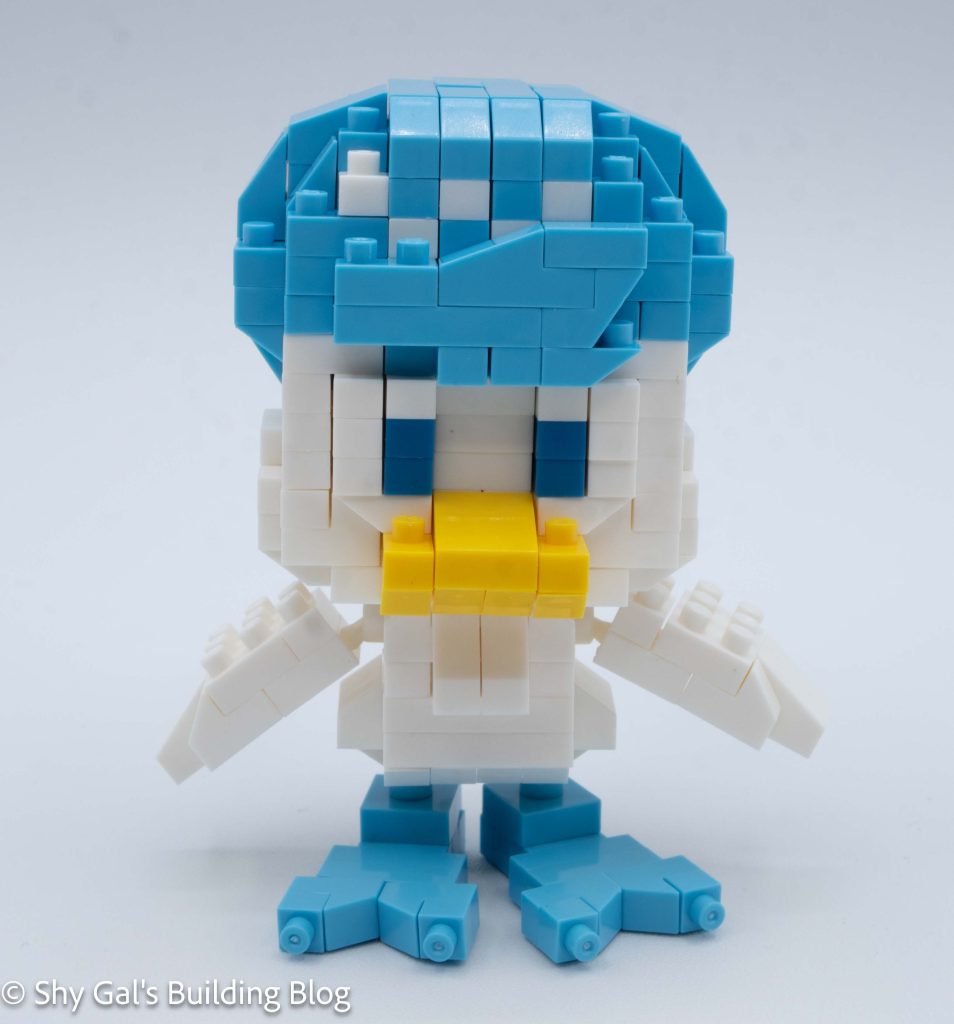
This kit begins with building the main section of the body. It is building the front and back of the body with a gap in the middle. The entire section I was able to build on my nanoblock pad.
The next section is to build the wings. There is a center pillar that has some ball joints for the wings to attach. Then, I built the wings and attached them to the ball joints.
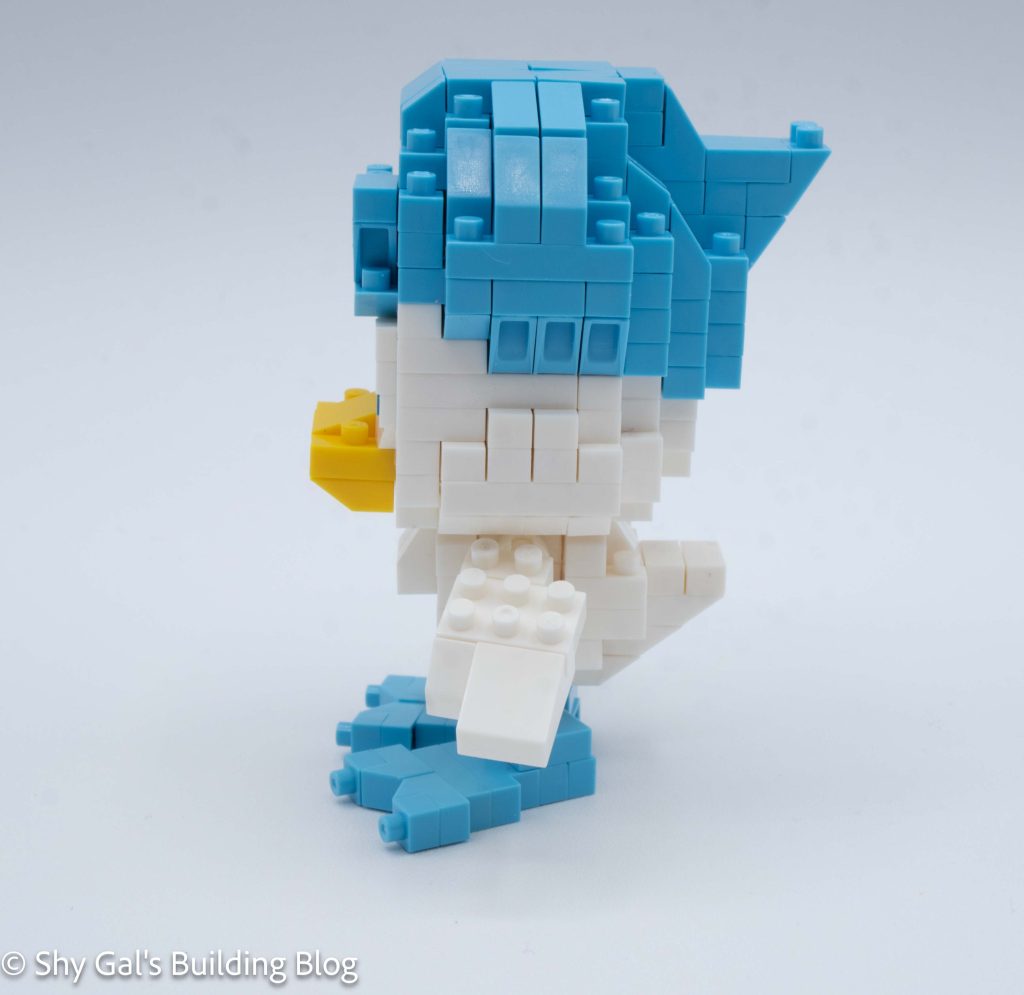
Now that the body is complete, it is time to add the feet. I built 2 identical feet and attached them to the bottom of Quaxly’s body.
The next major section is to build Quaxly’s head. I was able to build the first several steps on my nanoblock pad. The base was fairly straightforward. At some point, I added the dark blue eyes.
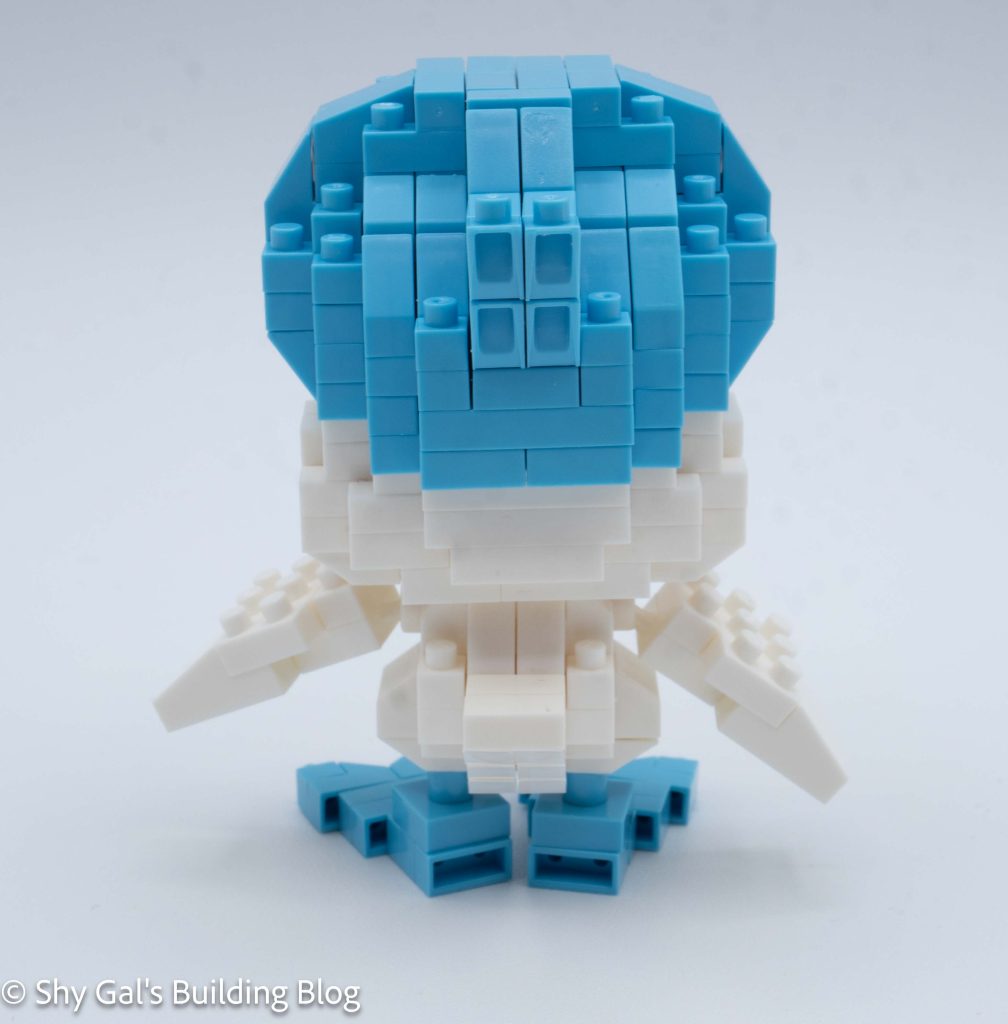
After building a lot of the head, it is time to build Quaxly’s most distinguishing feature, his hair. The steps to build the hair are very clear. Building the hair adds a checkerboard pattern in front, which I think looks a little odd. I do like how there is a wave in the front of the hair.
The final step is to add some details to the bottom of the head and to attach the head to the body.
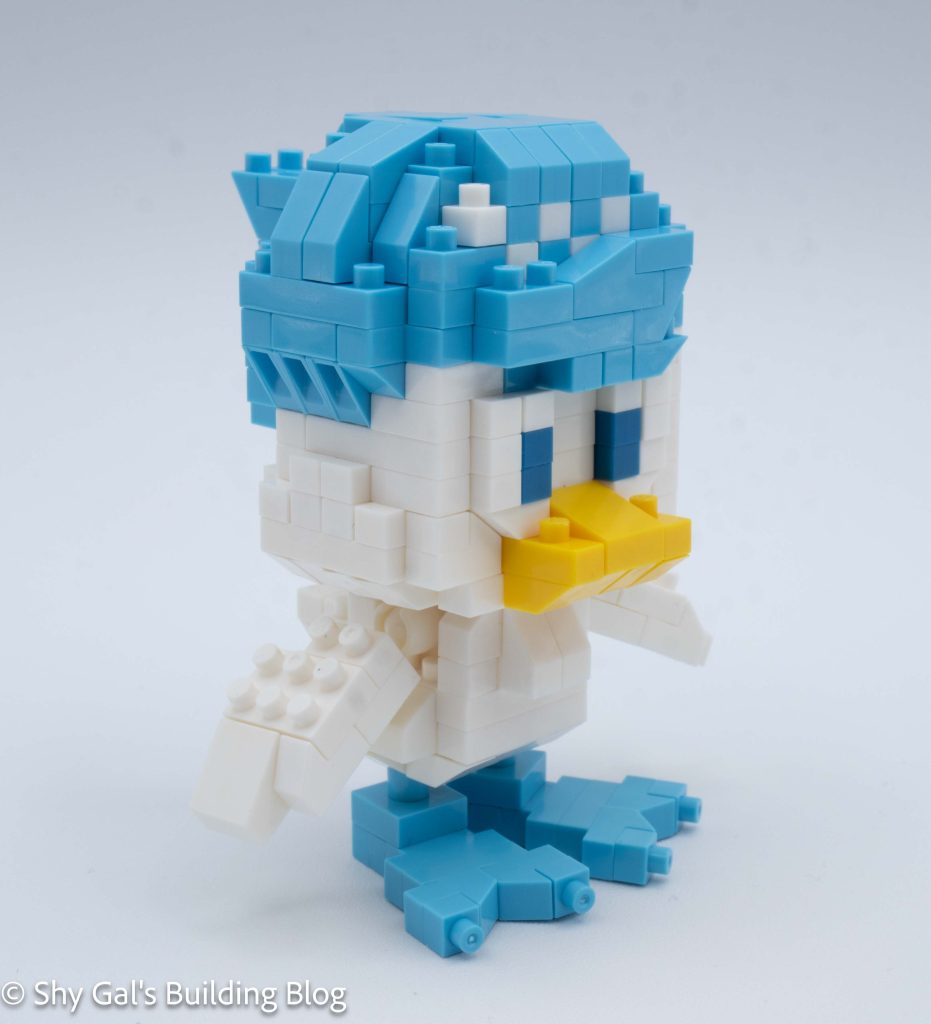
Things I liked:
- I like how poseable the figure is between the wings and feet
Things I didn’t like:
- I don’t like the checkerboard in front of the hair
